The ocean’s depths are the ultimate uncharted wilderness and still have the power to frighten and enthrall with tales of krakens, sea serpents, and other fantastic creatures, such as mermaids and sirens. Grog-fueled sailors with scurvy induced hallucinations mistook whales and giant eels for sea monsters, and manatees nursing their young for mermaids. Discover more about merfolk in mythology and ceramic art at our Fantastique exhibit.
Myths & Merfolk
Tales of half-human half-fish creatures have circulated since ancient times. The Babylonians worshipped a fish-tailed god named Oannes. In Graeco-Roman mythology, Poseidon was the god of the sea, known as Neptune to the Romans. He is often shown driving a chariot drawn by hippocampi or sea-horses which have just two hooves and the tail of a fish. He was married to Amphitrite, one of the 50 Nereids who were beautiful sea nymphs helpful to sailors fighting perilous storms. Nereids have no soul unless they marry a human and they evolved into the Undines of Renaissance alchemy.
Sirens were vicious and dangerous femme fatales who lulled mariners to sleep and shipwreck with their enchanting songs. Although Sirens originally had bird bodies in Homer’s Odyssey, the word siren means mermaid in many languages. Triton, the son of Poseidon, was a herald and is usually represented as a merman with a human body and fish tail. Like his father, he carried a trident but his special attribute was a twisted conch shell, which he blew like a trumpet to calm or raise the waves.
In Japanese mythology, Otihime was the Dragon Princess of the Sea who married a hunter prince of the mountains. Initially, they lived in a fish-scaled undersea palace, but he longed for his home. Their son was born on land, but Otihime returned to the sea after her husband spied on her shapeshifting to a crocodile during the birth. Shapeshifting and flight also feature in the Celtic myth of Melusine, whose husband breaks an oath to give her privacy in her bath. She is often portrayed with two fish tails and wings.
Mermaids & Manatees
Medieval mermaids were symbols of vanity and lust, regarded as ominous creatures for luring sailors into danger. Columbus describes such a sighting in 1493, “saw three mermaids which rose well out of the sea… they were not as beautiful as they are painted since in some ways they have a face like a man”. Many famous mariners have claimed to see mermaids or sirens, including Henry Hudson during his expedition to discover the Northwest Passage. Legend has it that John Smith, best known as the rescuer of Pocahontas, spied a green-haired mermaid in the Caribbean in 1614. However, recent research suggests the account was written by Alexander Dumas, author of The Three Musketeers to give credibility to one of his fictional stories about a Dutchman who sired four children with a mermaid.
It is thought that Columbus, and many explorers after him, saw manatees or dugongs, which are classed scientifically as Sirenia. It is hard to believe that a blubbery sea cow could be confused with a sexy fish-tailed maiden, but false mermaid sightings continue today. A fake TV documentary in 2012 prompted so many inquiries to the National Ocean Service that they issued a statement that no evidence of aquatic humanoids has ever been found. Meanwhile, manatees have become an endangered species threatened by blooms of poisonous algae, unseasonal cold water, motorboat collisions and even poaching for their meat and hide. Florida manatee deaths hit a record high in 2013 with 829 adults and calves killed, which is about 17% of the total population. Manatee Appreciation Day on March 27th helps to raise awareness of these quirky aquatic mammals. See how you can help save these gentle giants so that they continue to exist, unlike the mermaids of fantasy. Visit SaveTheManatee.org. #ManateeAppreciationDay.
Manufactured Mermaids
Belief in mermaids was so widespread in the 19th century that they were manufactured and exhibited to a gullible public, most notably by P.T. Barnum who made a fortune with his Feejee Mermaid. It was made by combining a small monkey’s head and torso with a dehydrated fish. Rays and skates were often mutilated to resemble mermaids and other sea monsters which became known as Jenny Hanivers. Their fins were cut to resemble wings and string was tied around the neck area to give a human appearance. Some really scary examples of hoax mermaids can be seen at the Victor Wynd Museum of Curiosities in London.
Victorian potters cashed in on the fascination with mermaids by creating ornamental designs adorned with a variety of merfolk. For major exhibitions, the Minton factory produced a spectacular Majolica jardinière, Wedgwood made a Majolica Mermaid clock, and Doulton modeled mermaid compotes and lamps for the Chicago World’s Fair in 1893. Mermaids were popular motifs during the Art Nouveau era with their long flowing hair and sinuous tails amid strands of seaweed as can be seen in the vases painted by Margaret Thompson and George White for Royal Doulton in the early 1900s. Daisy Makeig Jones designed a fantastic mermaid gazing in a mirror surrounded by swirling hair and waves as the center of a bowl for Wedgwood’s Fairyland Lustre collection.
The Little Mermaid
The Little Mermaid by Hans Christian Anderson, published in 1836, has influenced most modern depictions of mermaids, including the famous Disney film of 1989. In this classic fairytale, a young mermaid trades her voice for human legs in her quest for the love of a prince. In contrast, the mermaids who inhabit the lagoon in Neverland in J. M. Barrie’s Peter Pan are generally malevolent to everyone except Peter. Despite their beauty and enchanting voices, they are unfriendly and vain and at night they transform into dark and dangerous creatures. In the original book, they assault Wendy with their tails and try to drown her. Illustrators of children’s books have given us many enduring images of mermaids which in turn inspired alluring porcelain sirens by Royal Doulton and Lenci in the escapist fantasy world Art Deco era.
Movie Mermaids
Movie mermaids were in vogue in the early 1900s thanks to the Australian swimmer Annette Kellerman. The ‘Diving Venus’ became a successful film actress, famous for her water ballets, and she designed her own mermaid costumes for movies such as Siren of the Sea in 1911. A popular American fantasy film of 1948 tells the story of Mr. Peabody and the Mermaid. While fishing on a Caribbean vacation, Peabody reels in a mermaid and teaches the alluring creature how to kiss. He hides her in the resort’s fish pond to avoid discovery by his wife who suspects him of infidelity. Filmed mostly as flashbacks, at the end of the fishy tale Peabody is persuaded by a doctor that he was hallucinating while undergoing a midlife crisis on the approach of his 50th birthday. The movie was filmed at Weeki Wachee Springs in Florida, a ‘mermaid’ attraction created in 1947 by a stunt swimmer, which continues to feature entertaining underwater mermaid performances today.
Sirens of the Sea
Mermaids are a major inspiration for British ceramic artist Victoria Ellis, who creates bas-relief panels of fantasy subjects in clay. As can be seen in her murals, she has a particular fondness for Art Nouveau and Art Deco styles. Her intricate designs are precisely carved, and the glazes run and pool into her patterns resulting in a bejeweled effect. Her process is highly labor-intensive, and each hand-crafted piece is unique. Several of her Victoria’s decorative designs are featured in our Fantastique exhibit.
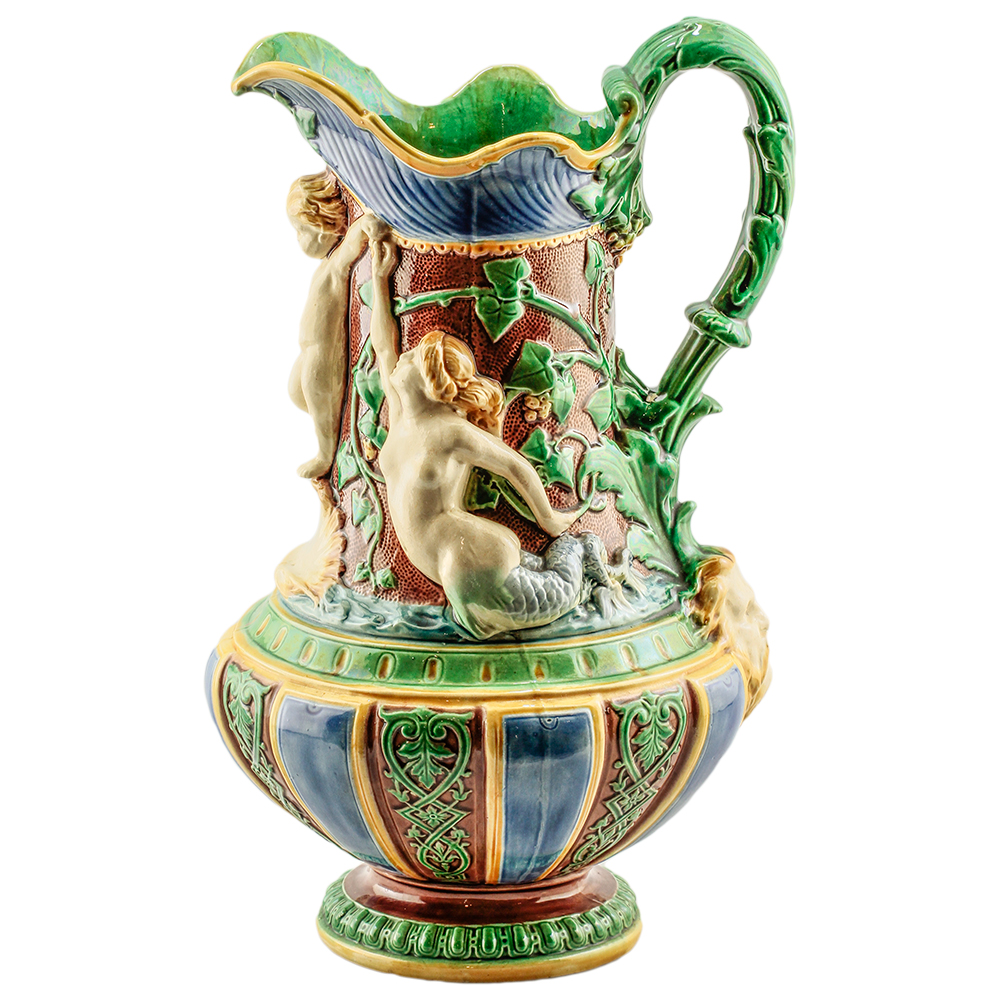
Minton Majolica Jug
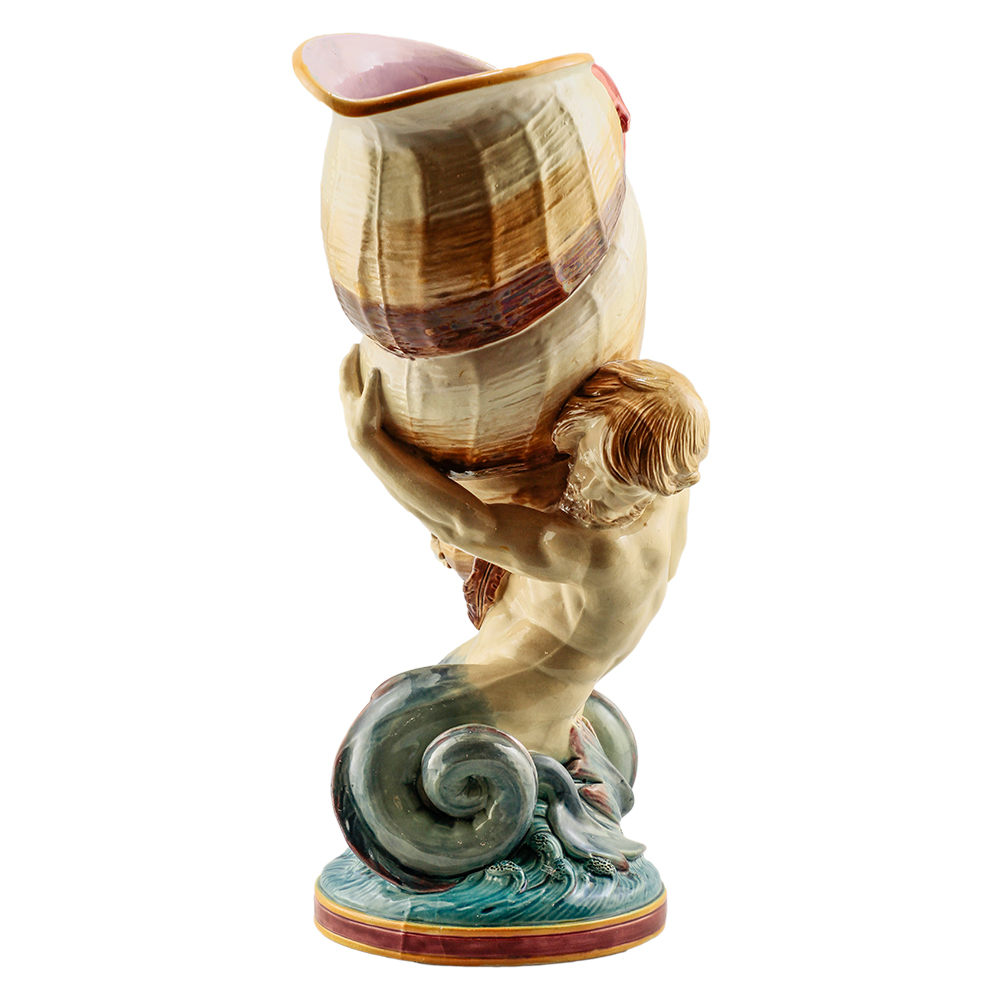
Minton Majolica Merman
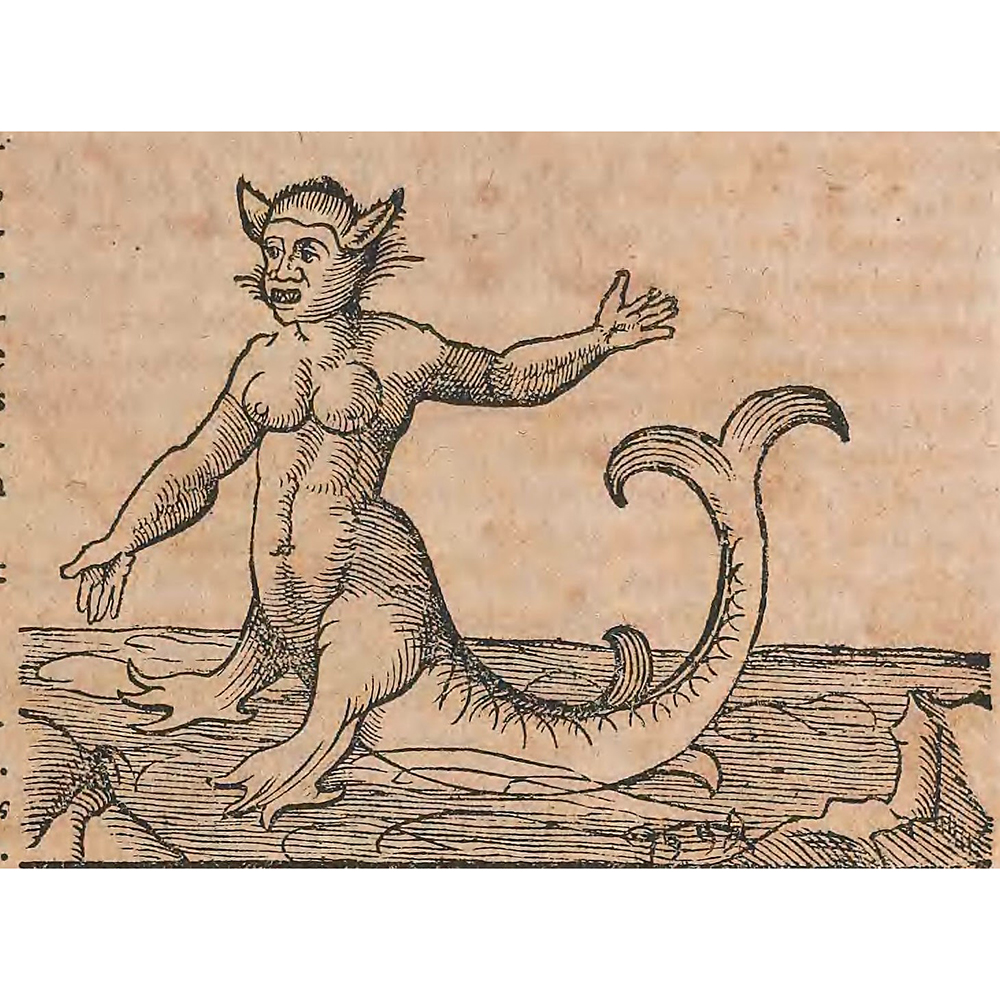
Young Merman
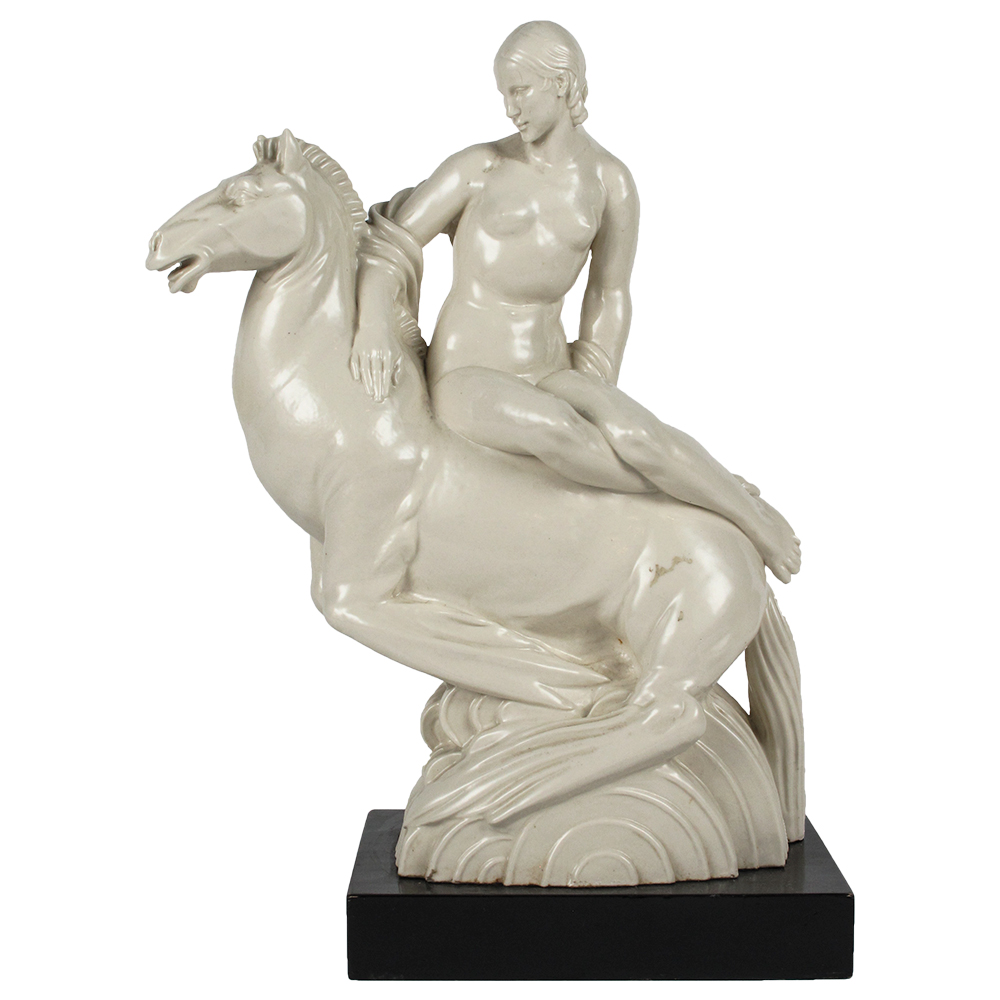
Amphitrite on Hippocampus by C. Vyse
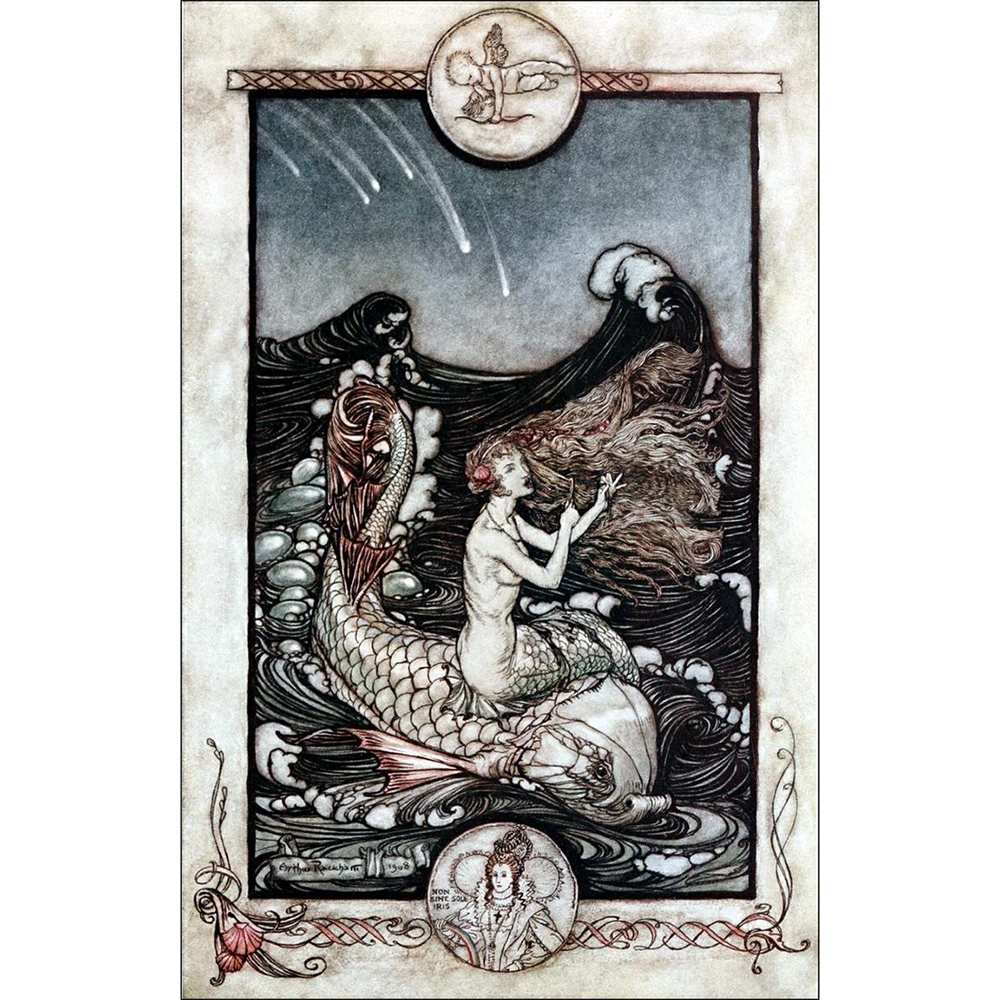
Mermaid by A. Rackham
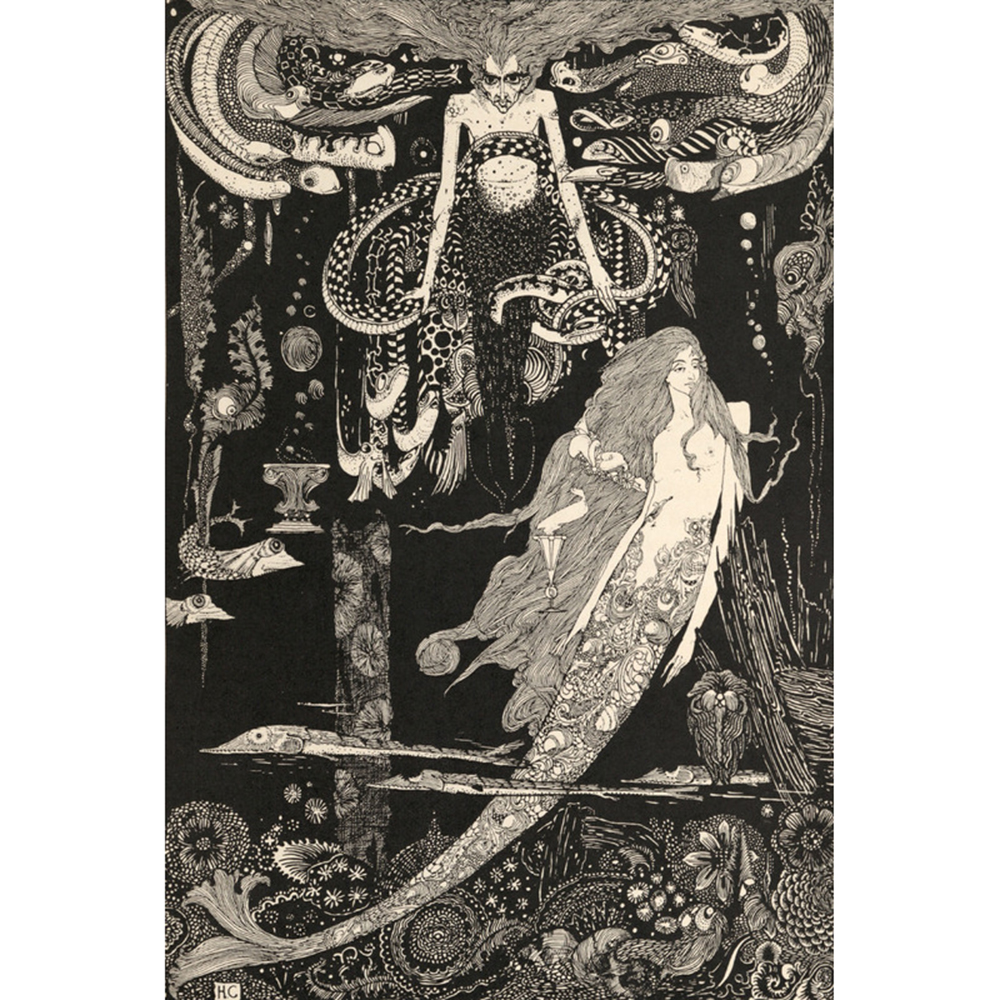
Sea Maid by H. Clarke
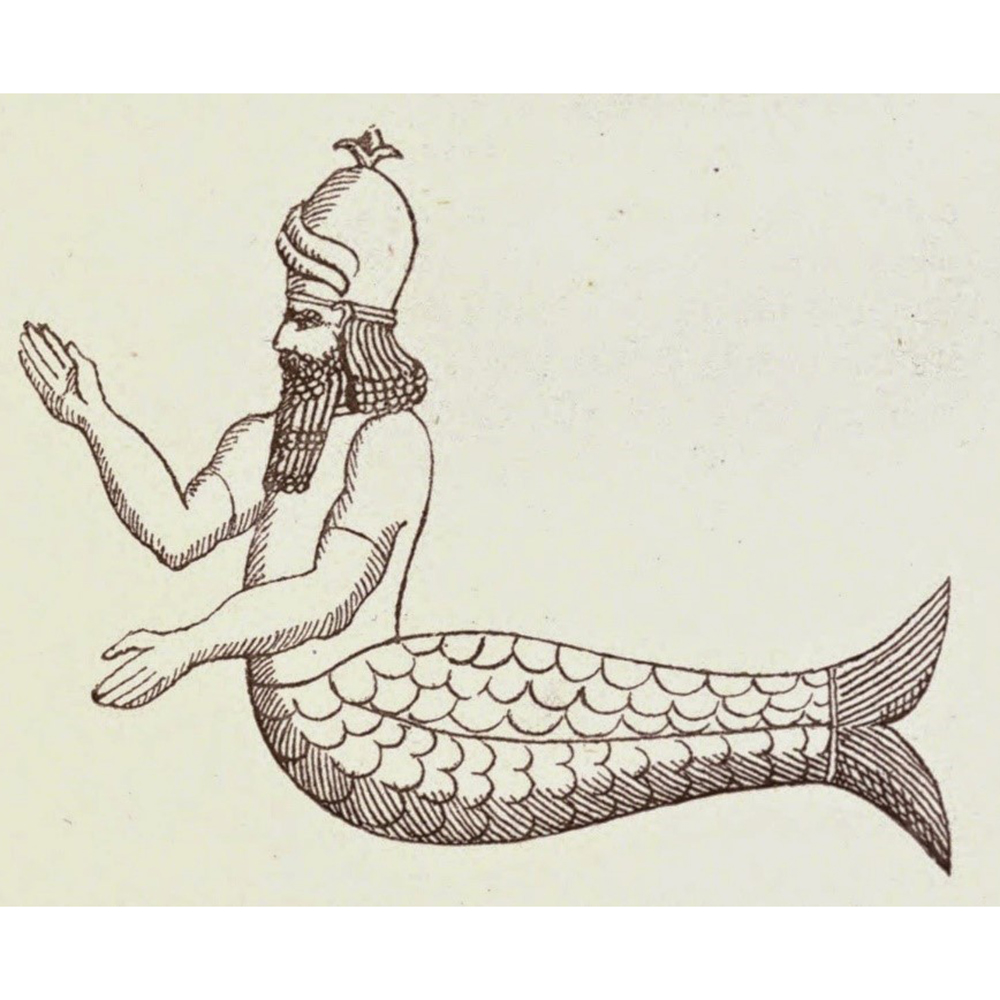
Oannes Babylonian God
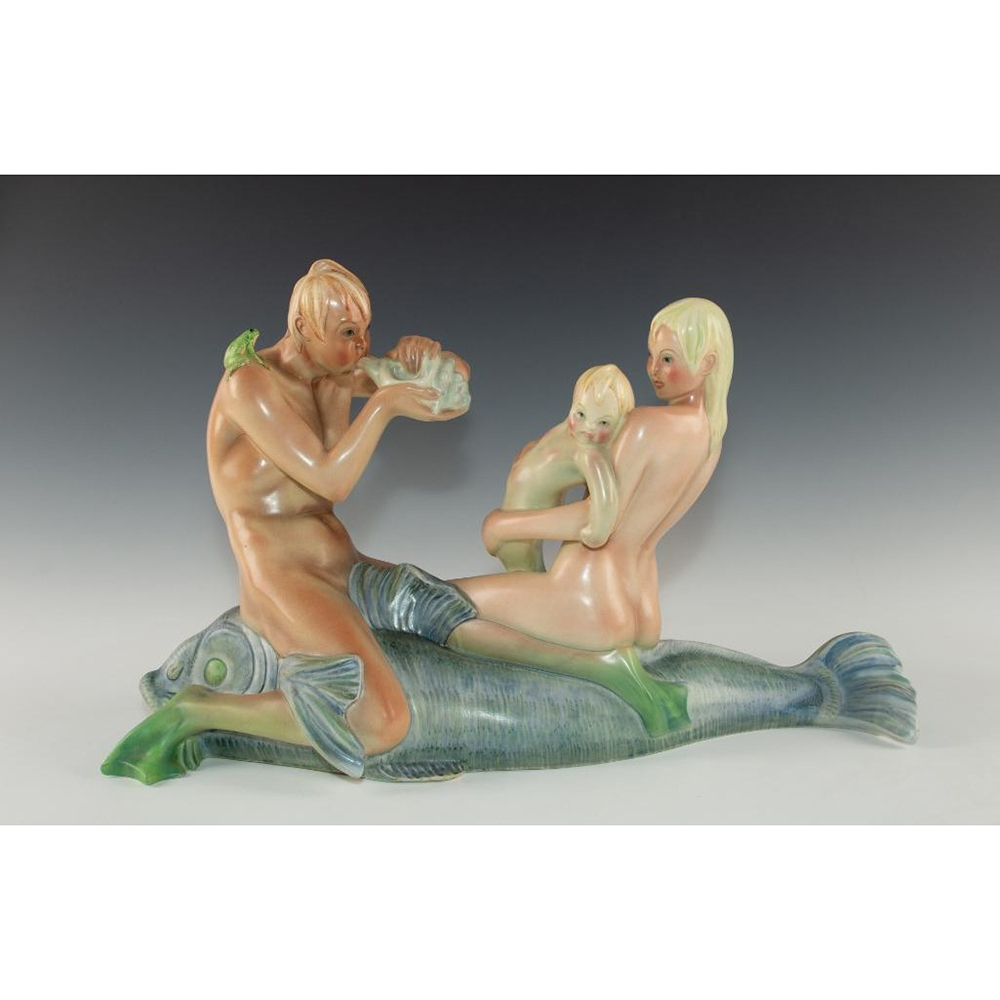
Lenci Mermaid Family by A. Jacopi
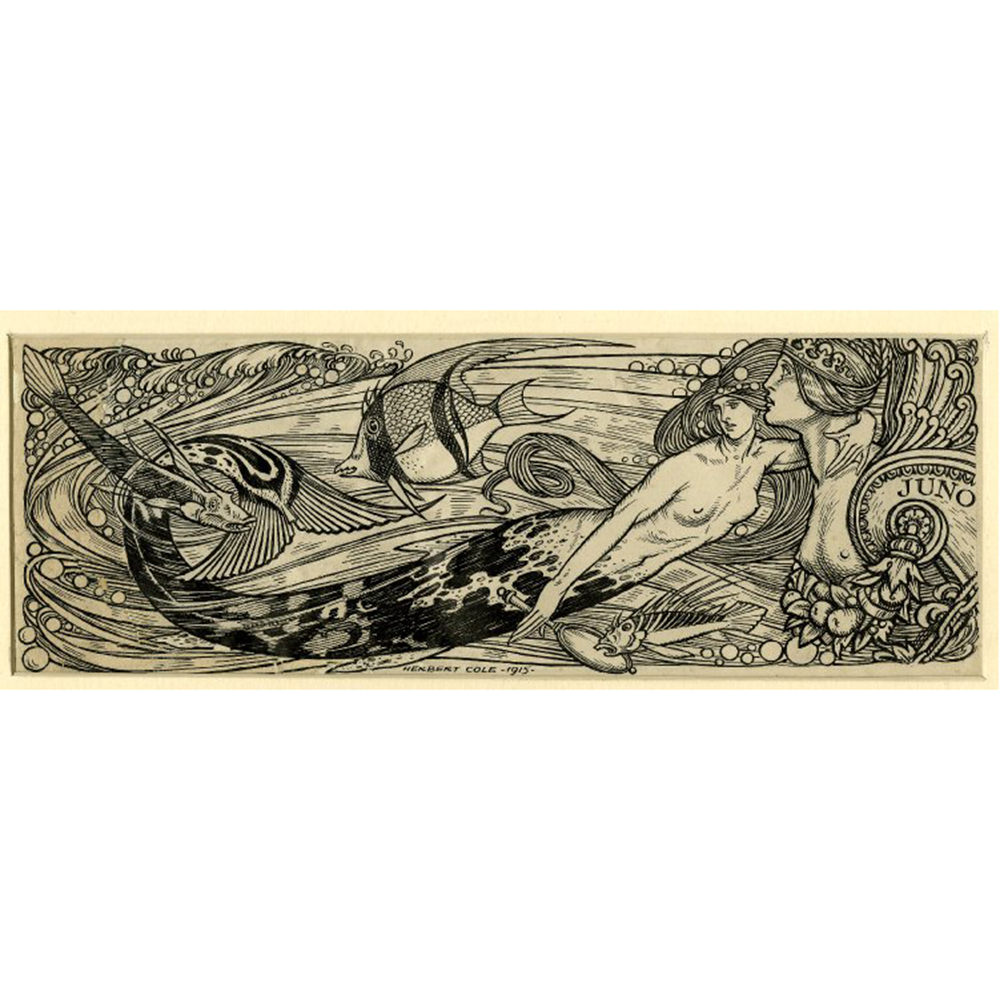
Juno & Mermaid by H. Cole
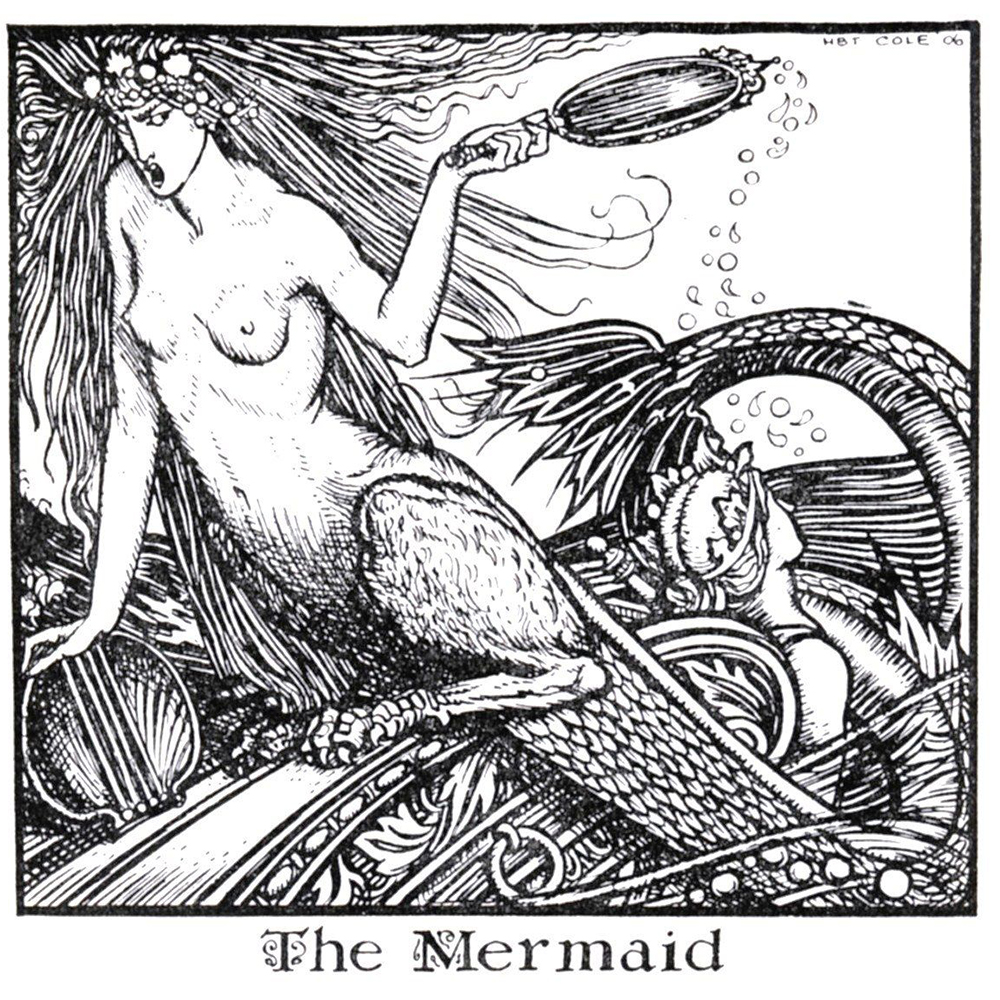
Mermaid by H. Cole
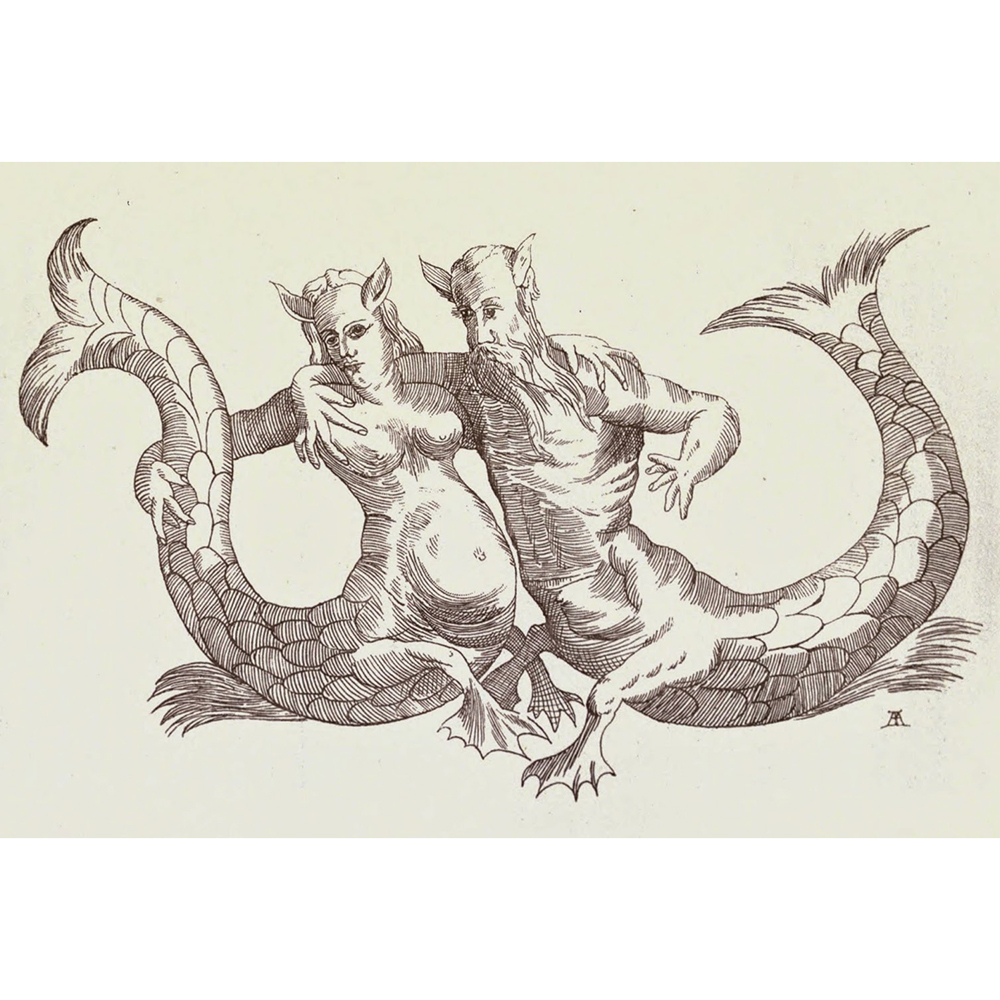
Nereids
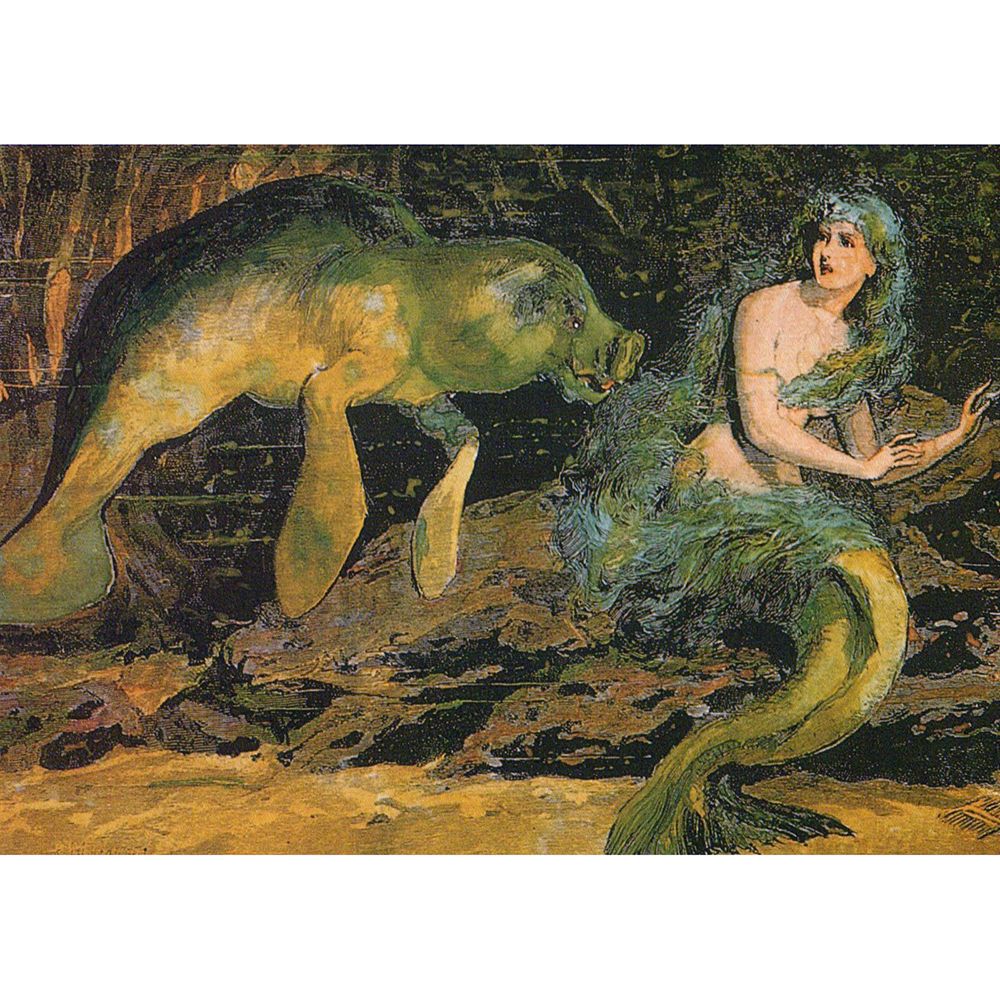
Mermaid and Manatee
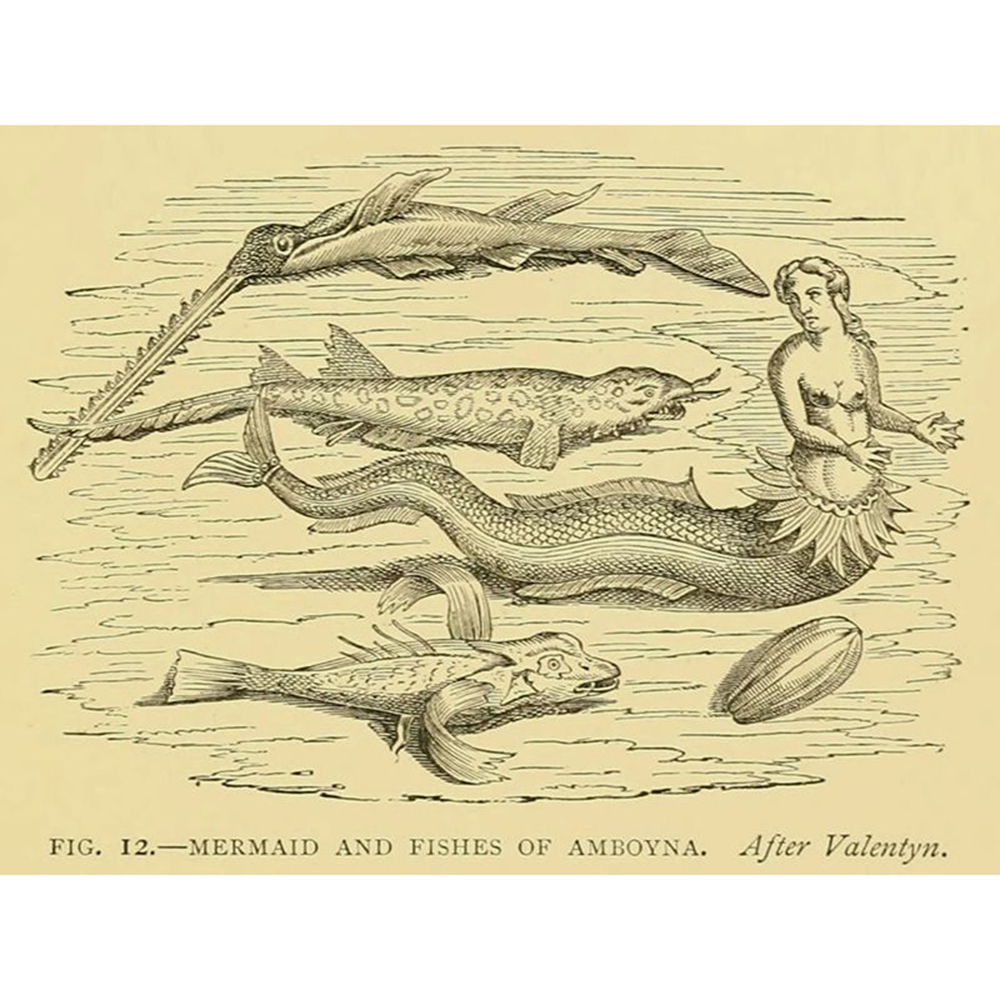
Mermaid & Fishes after Valentyn
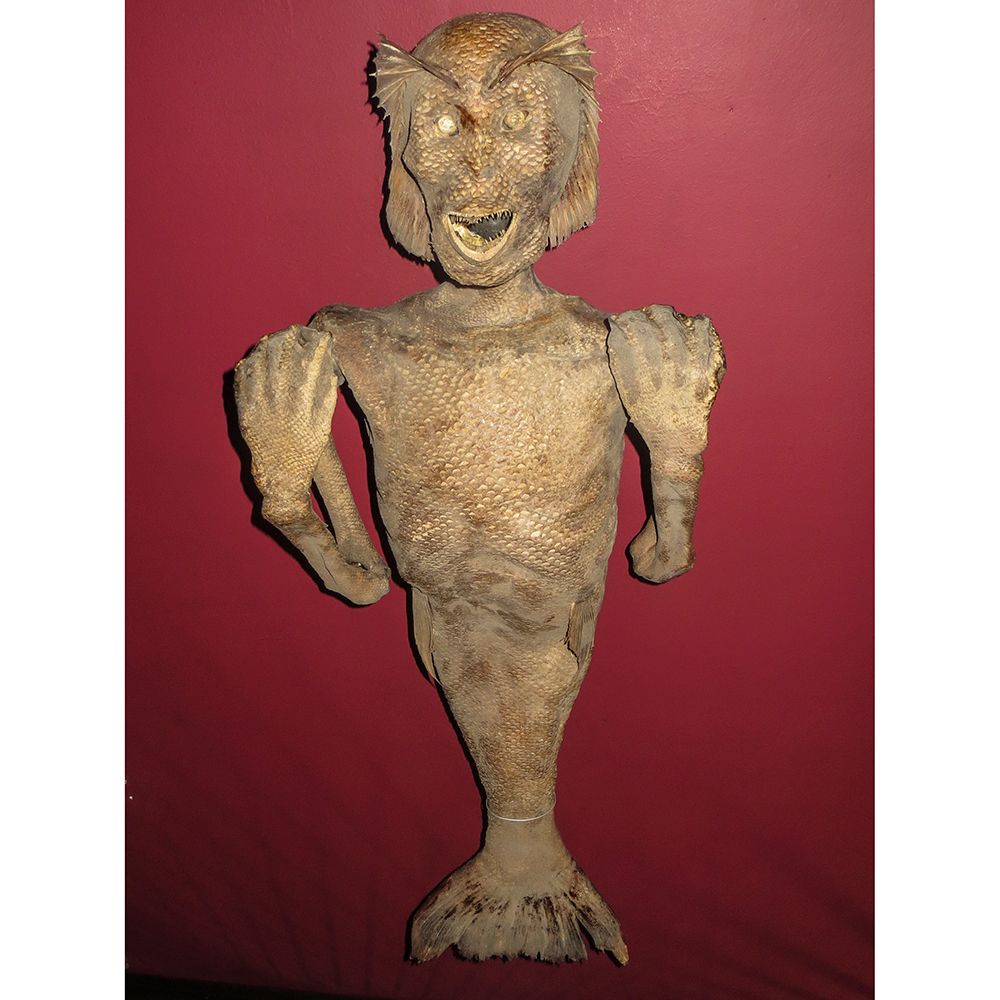
Fake Mermaid Victor Wynd Museum
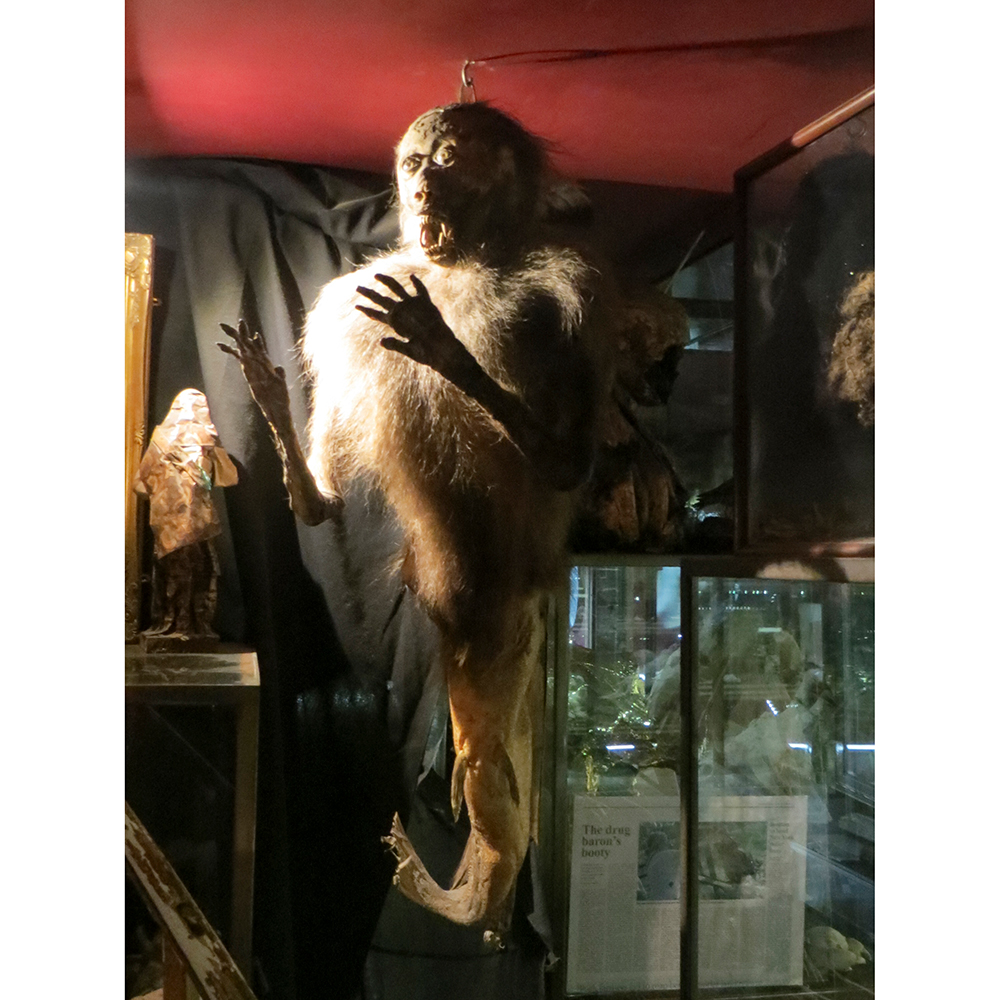
Fake Mermaid Victor Wynd Museum
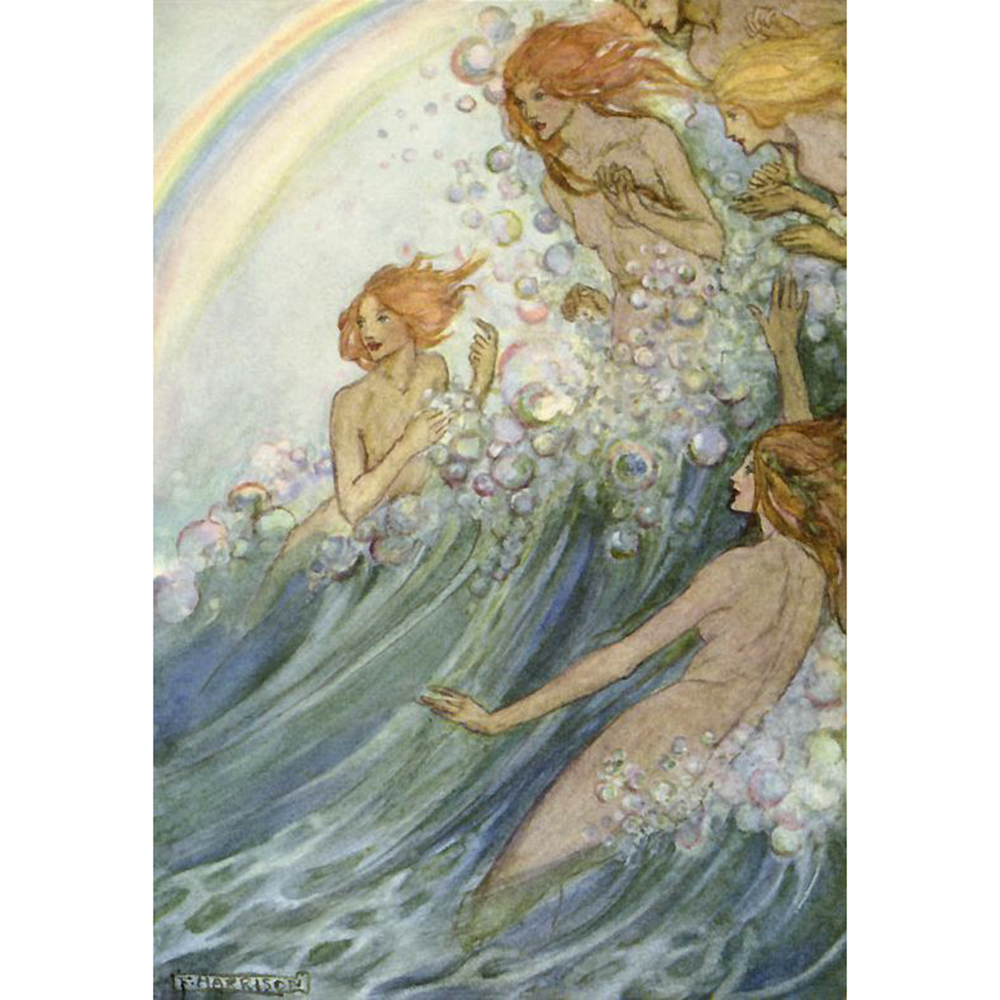
Mermaids in Waves by E. F. Harrison
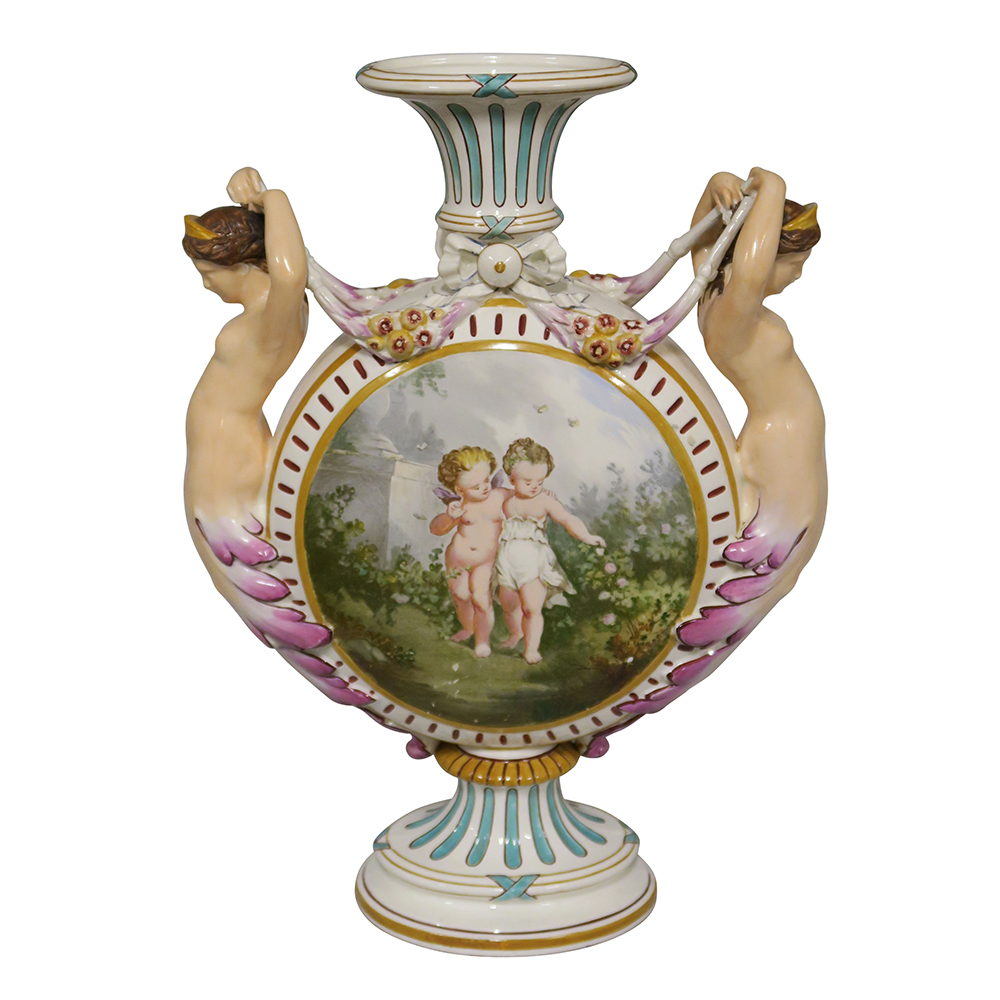
Wedgwood Queens Ware Mermaid Vase
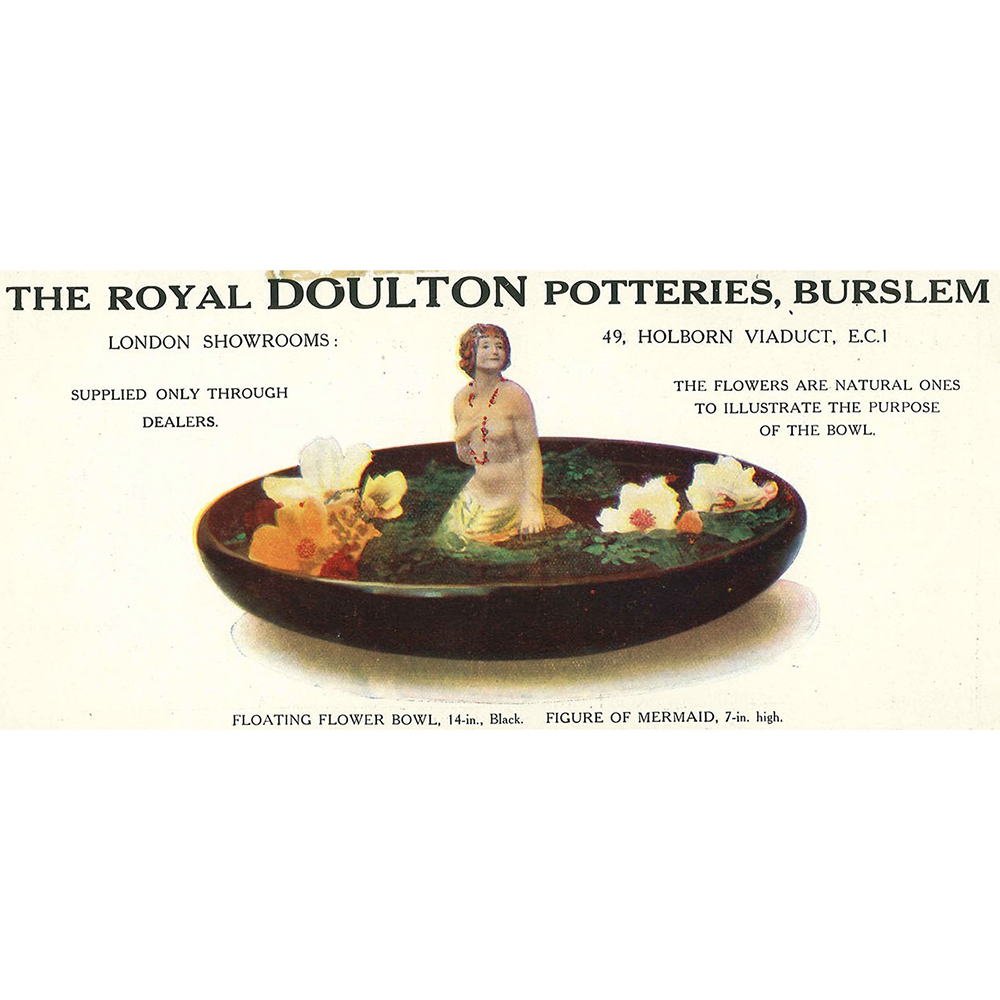
Royal Doulton Floating Flower Bowl Advertisement
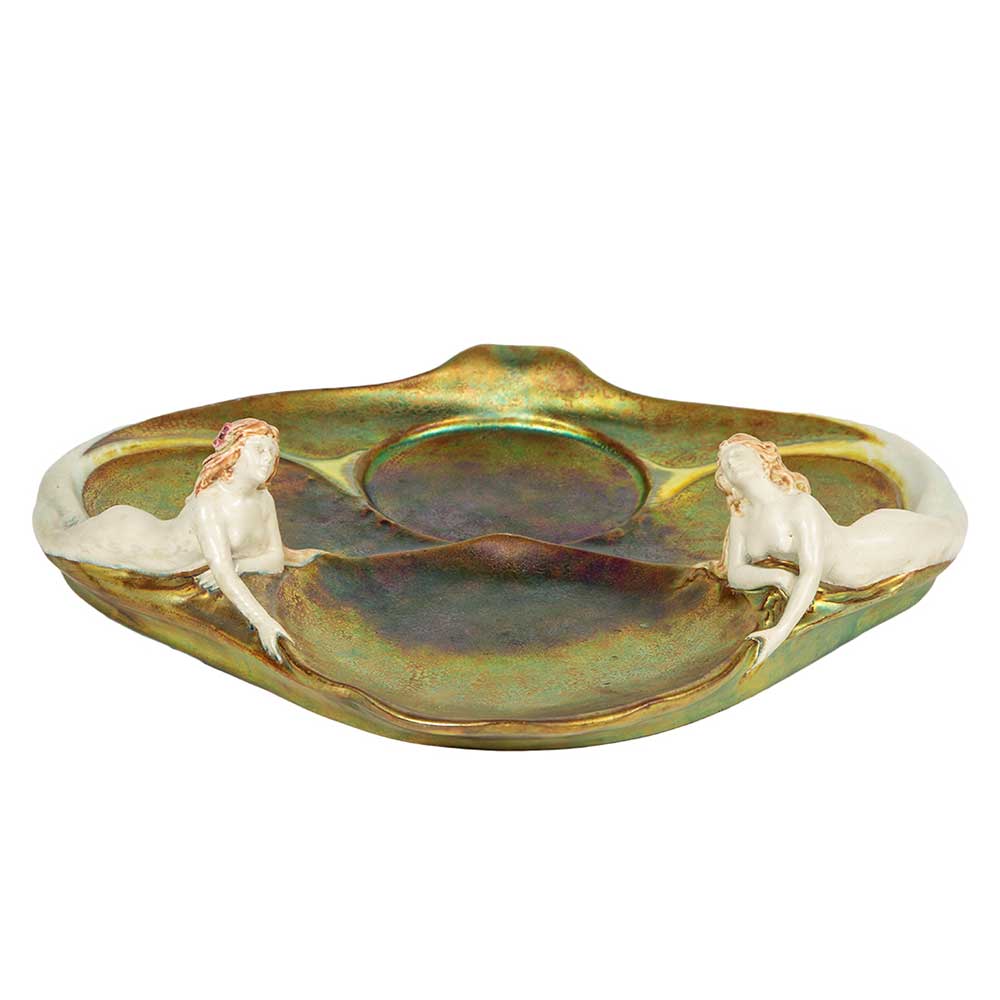
Zsolnay Mermaid Tray
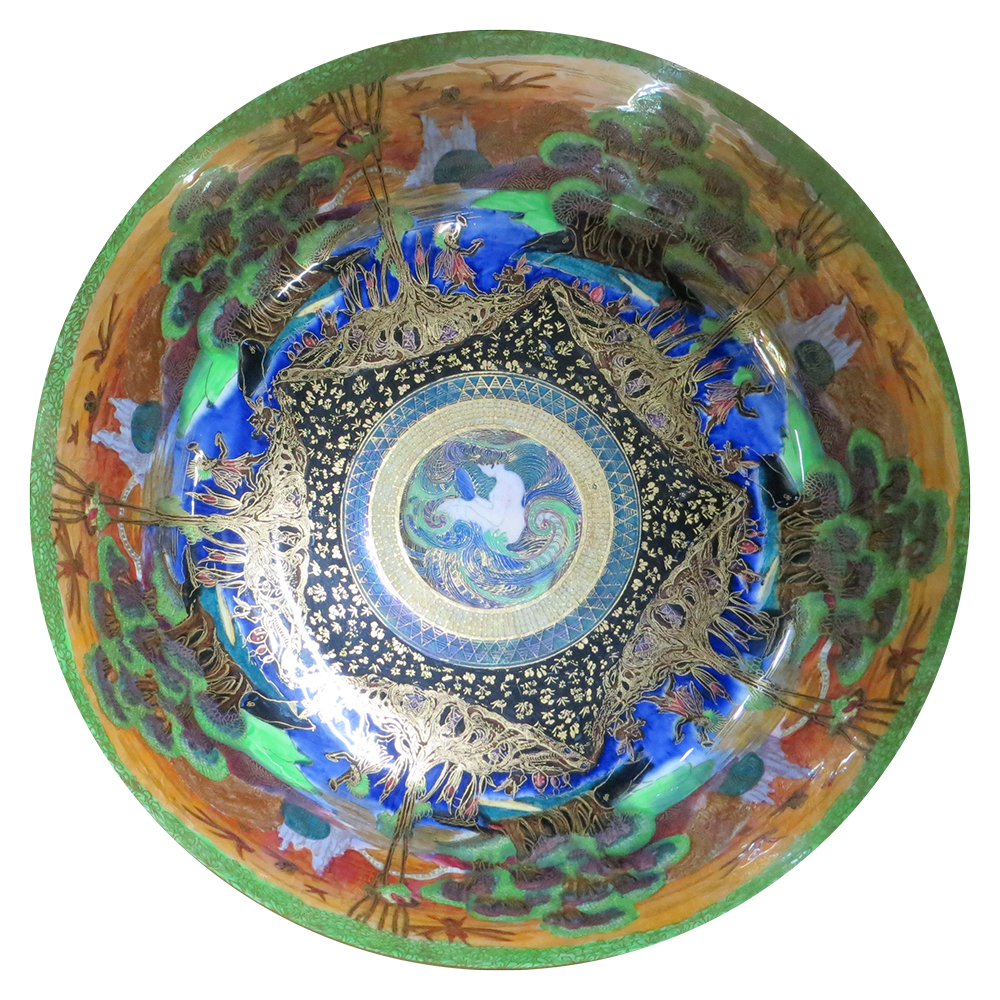
Fairyland Lustre Mermaid Bowl

Fairyland Lustre Mermaid Bowl
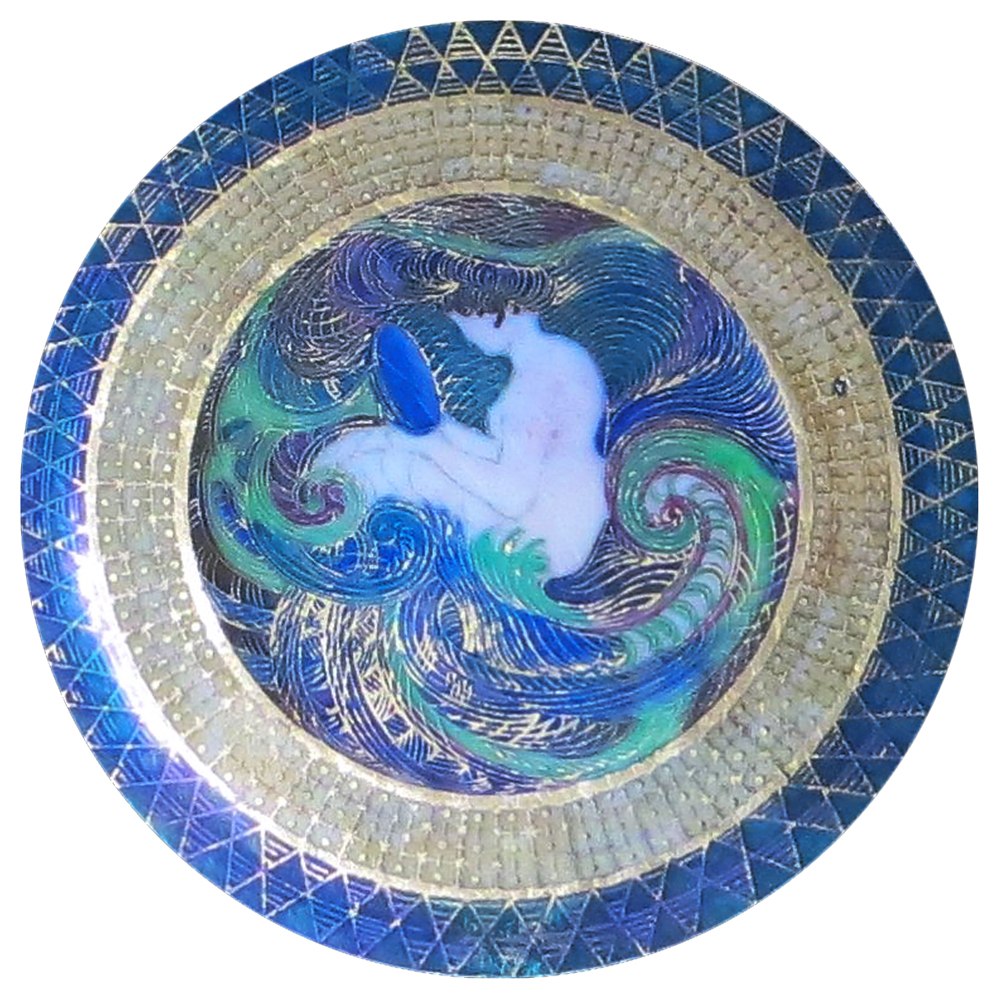
Detail of Fairyland Lustre Bowl
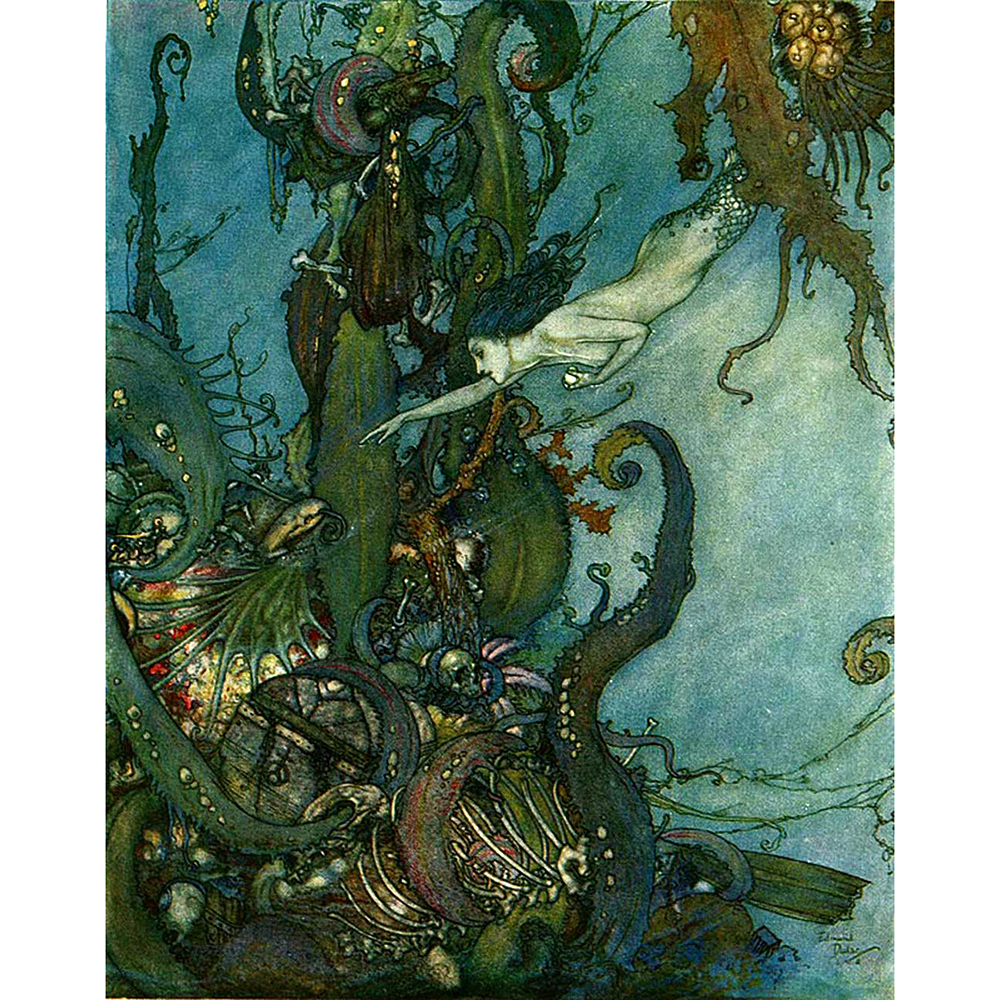
Mermaid by E. Dulac
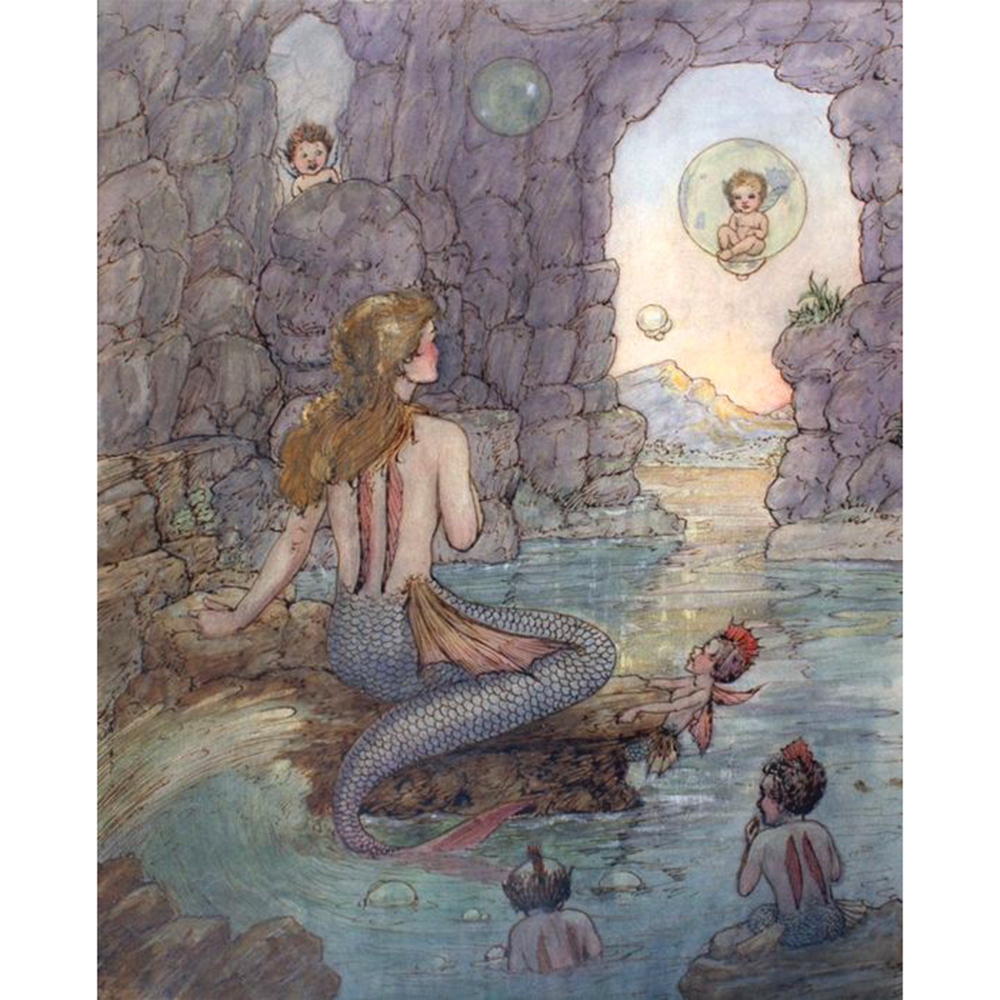
Mermaid by H. Gaze
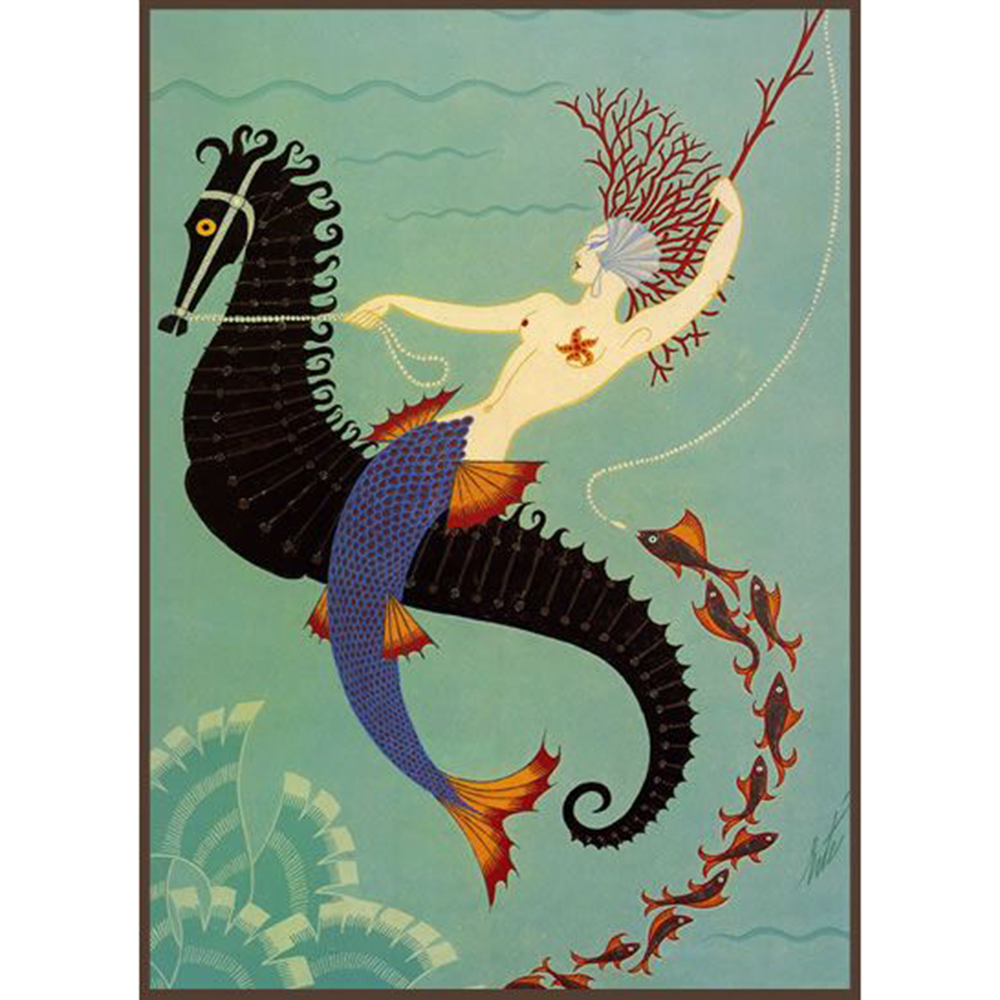
Mermaid by Erte
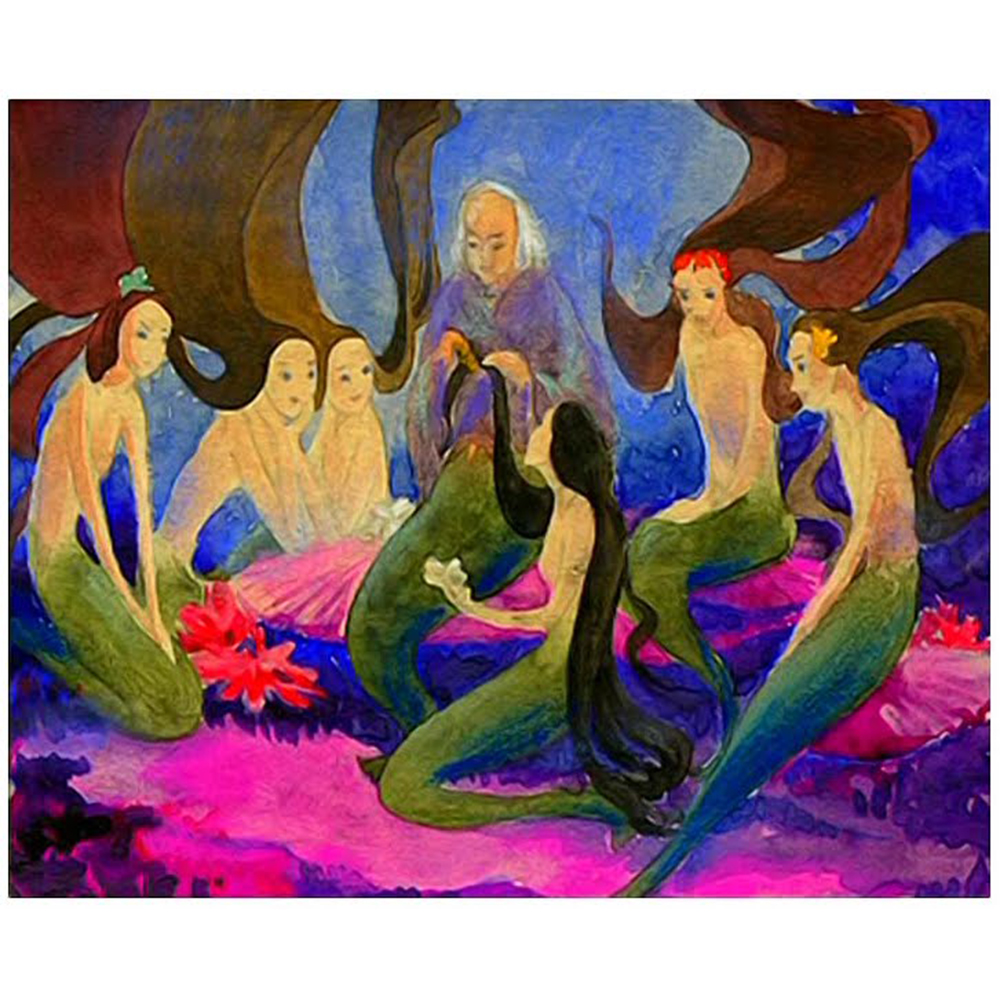
Mermaids by K. Nielsen
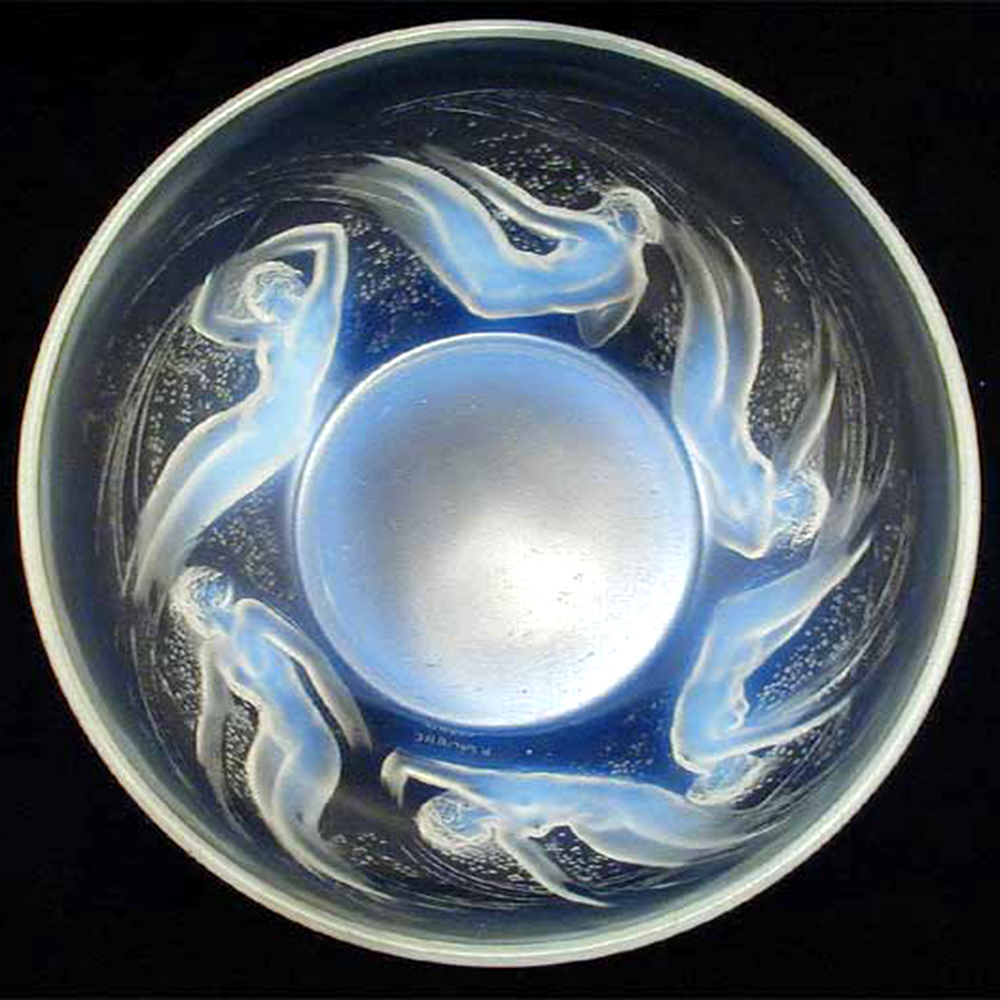
Lalique Ondines
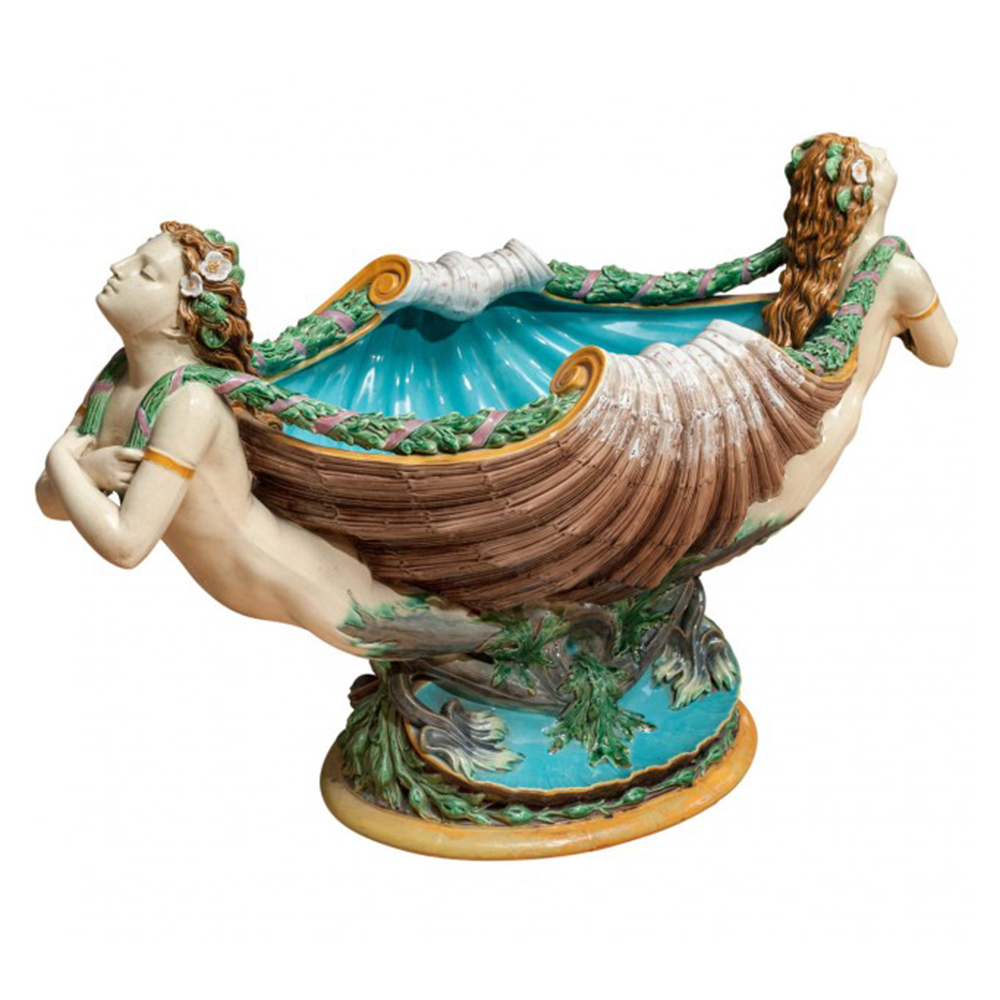
Minton Majolica Mermaids Flower Bowl
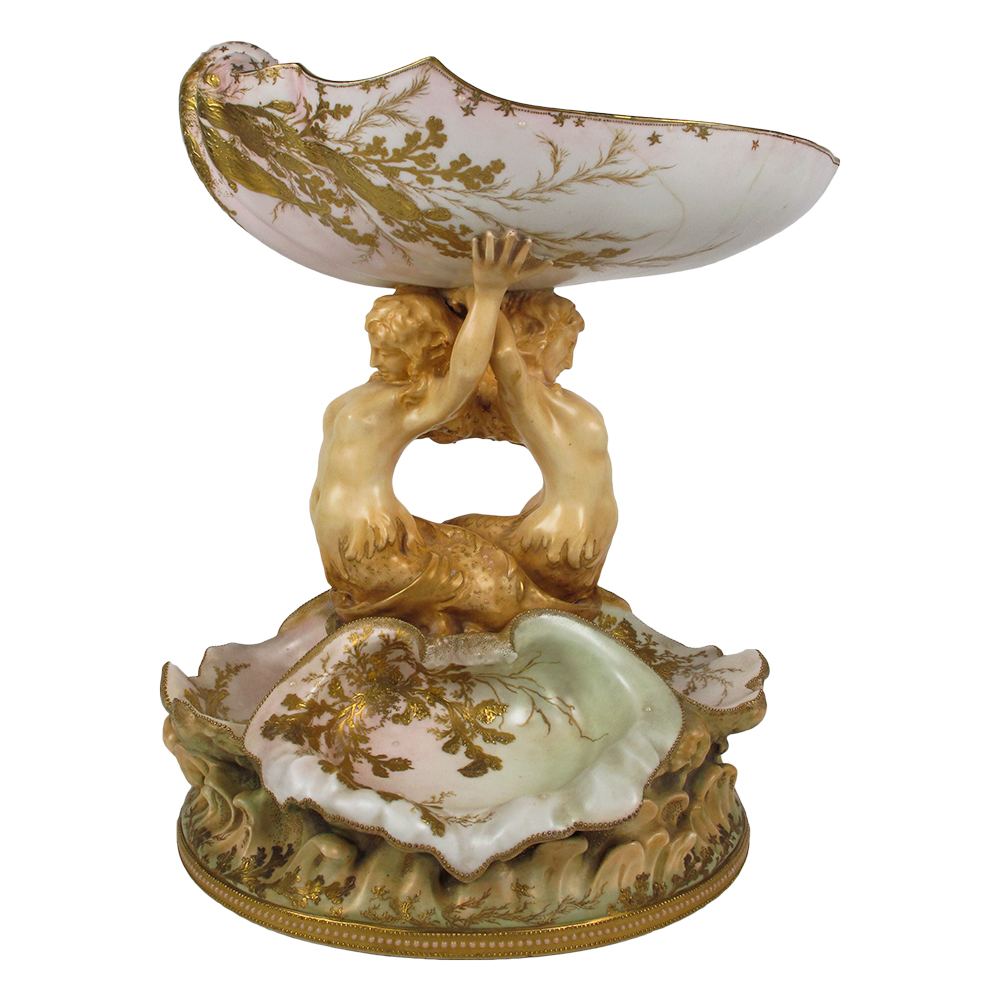
Doulton Burslem Mermaid Centerpiece
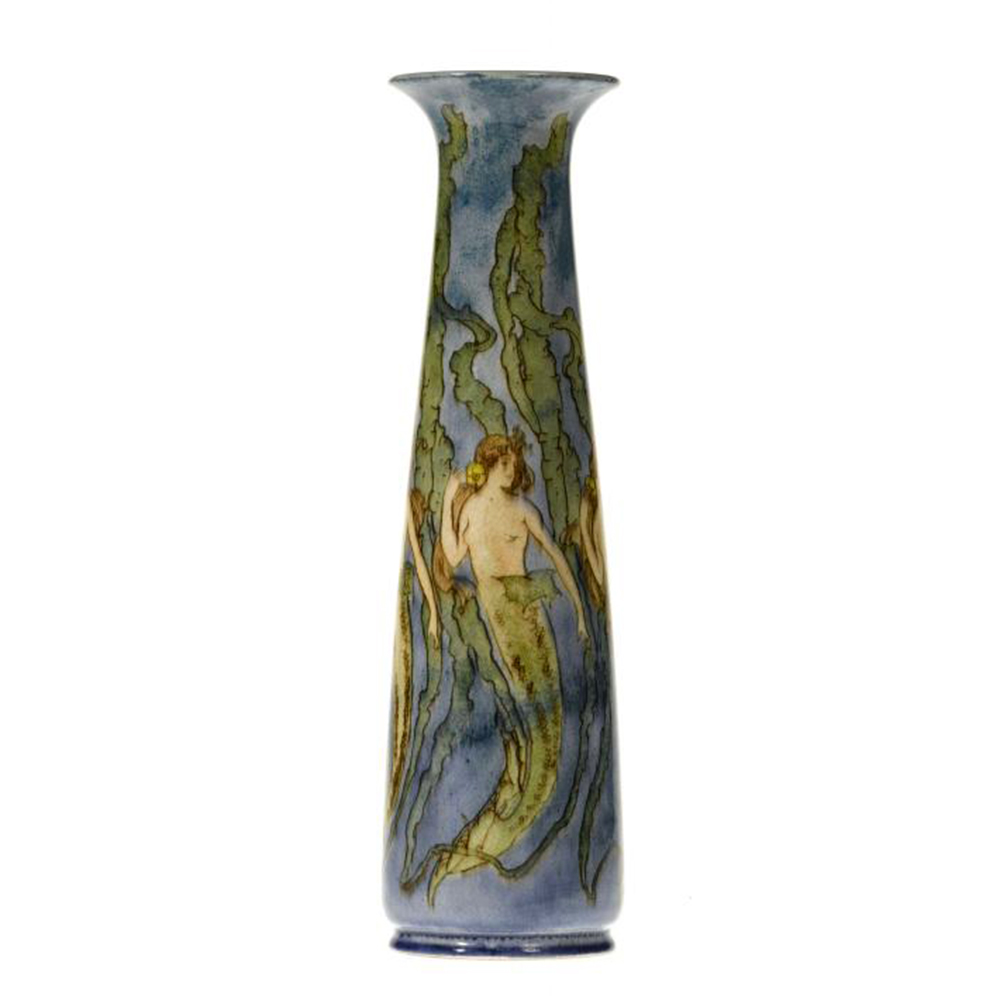
Mermaid Vase by M. Thompson
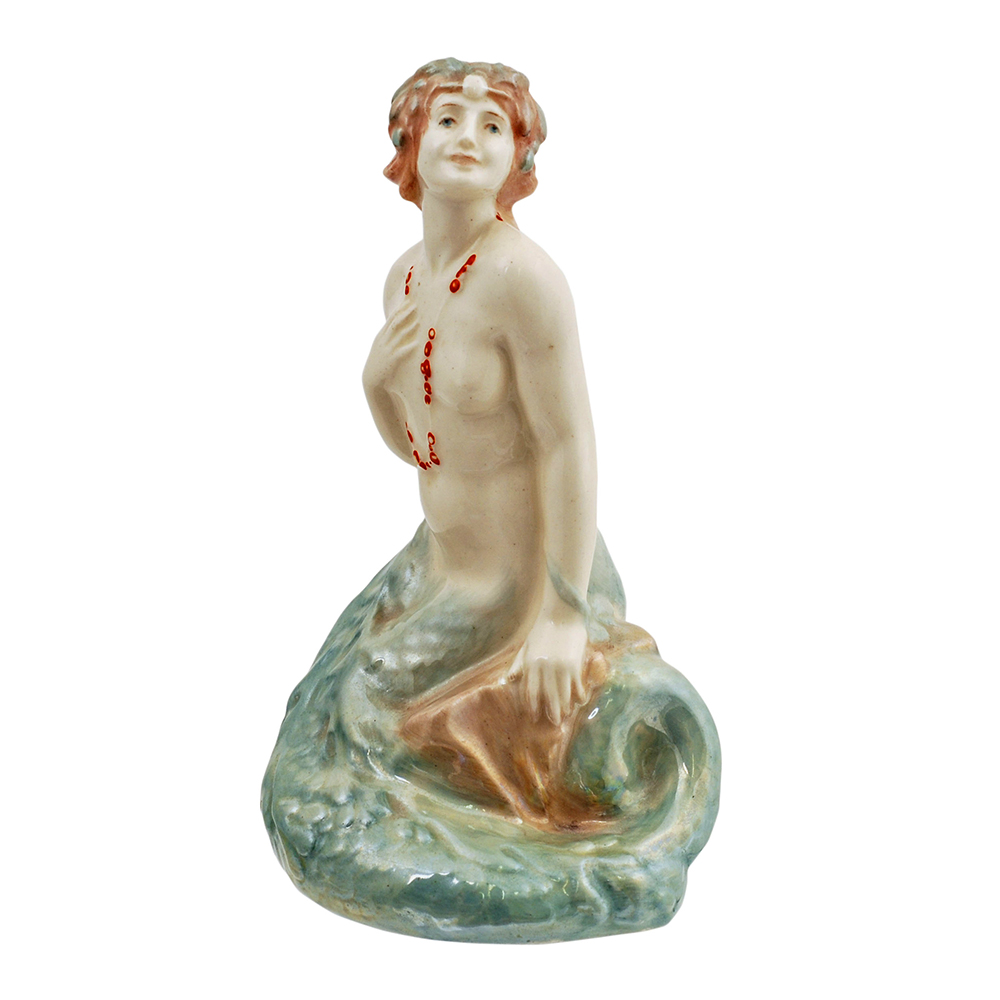
Royal Doulton Mermaid
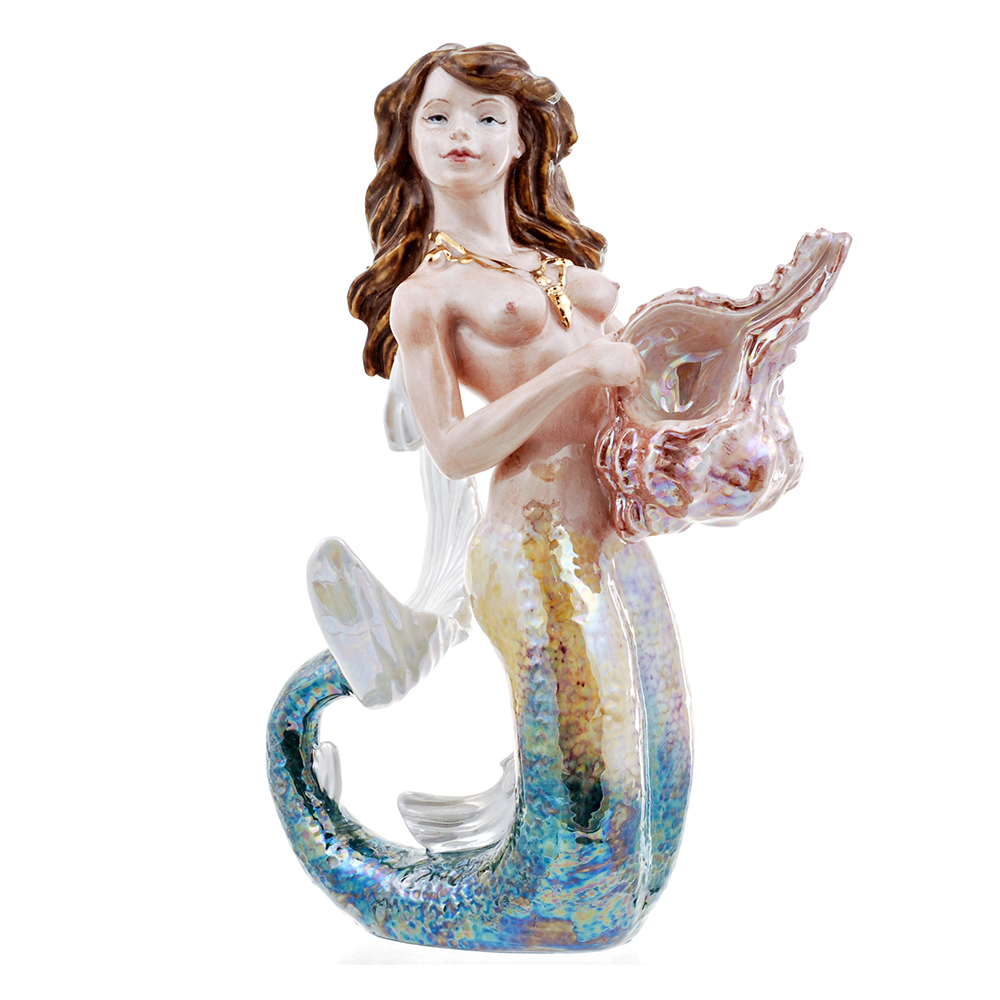
Royal Doulton Dauphin
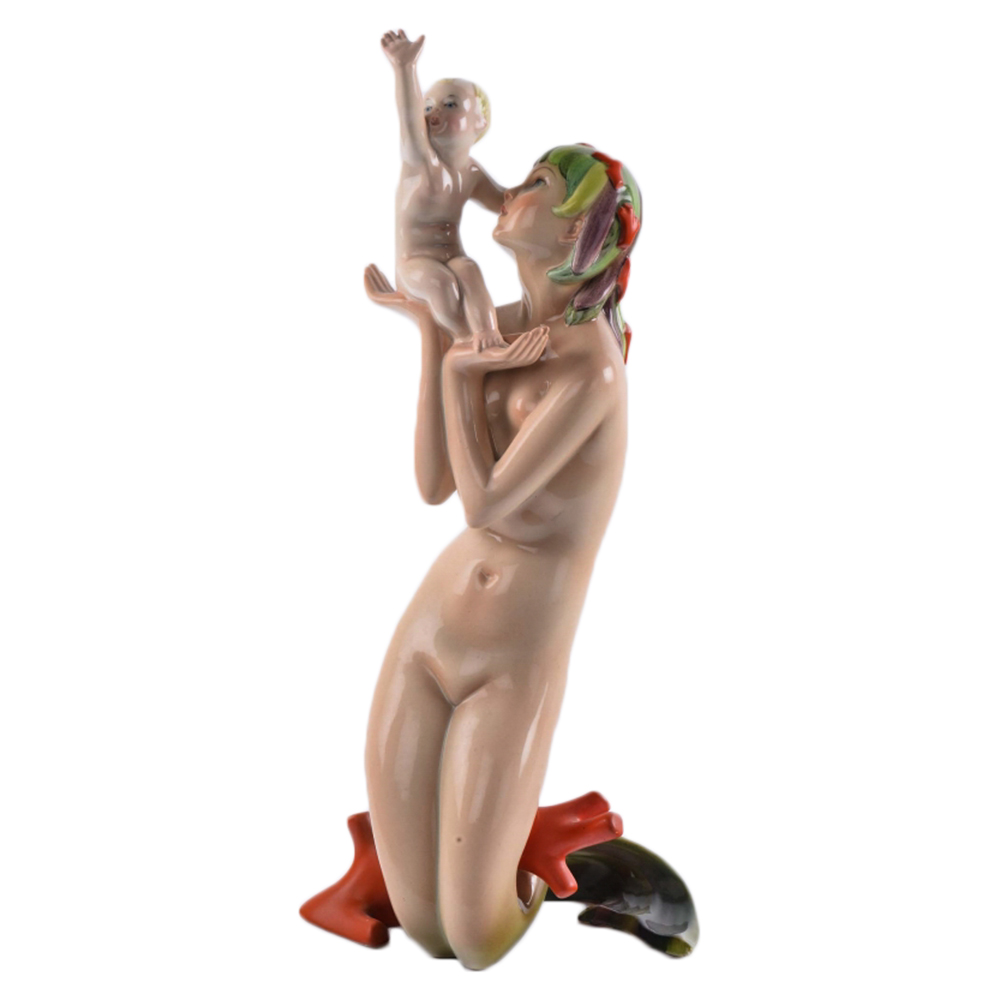
Lenci Mermaid Mother

Zsolnay Mermaid Tray
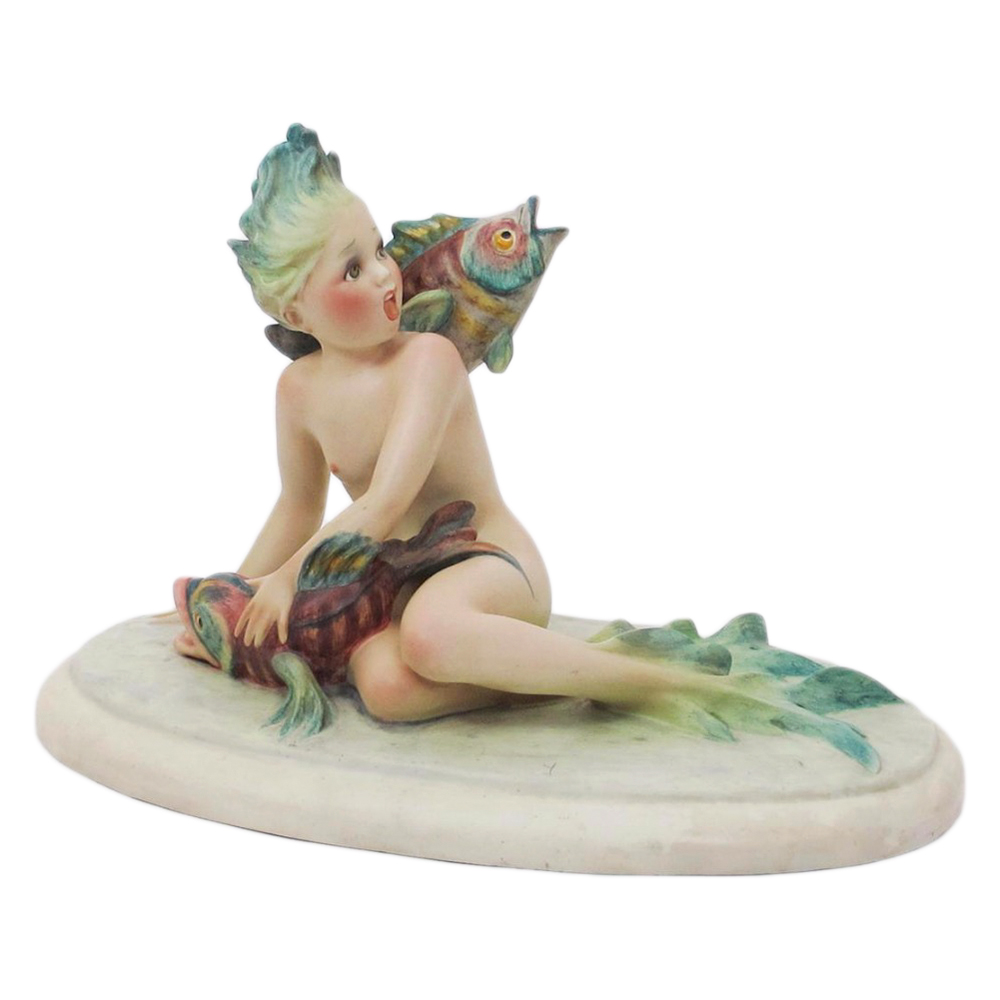
Siren by A. Pannuncio
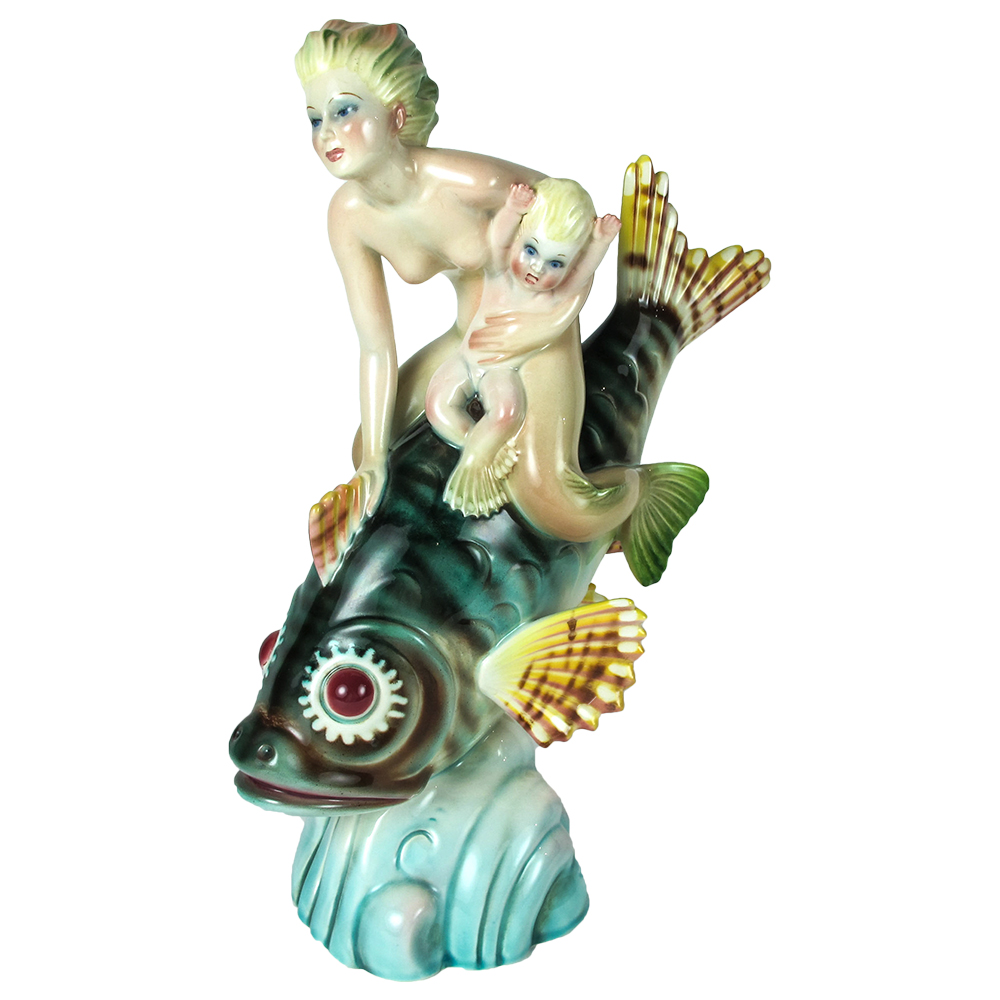
Detail of Fairyland Lustre Bowl
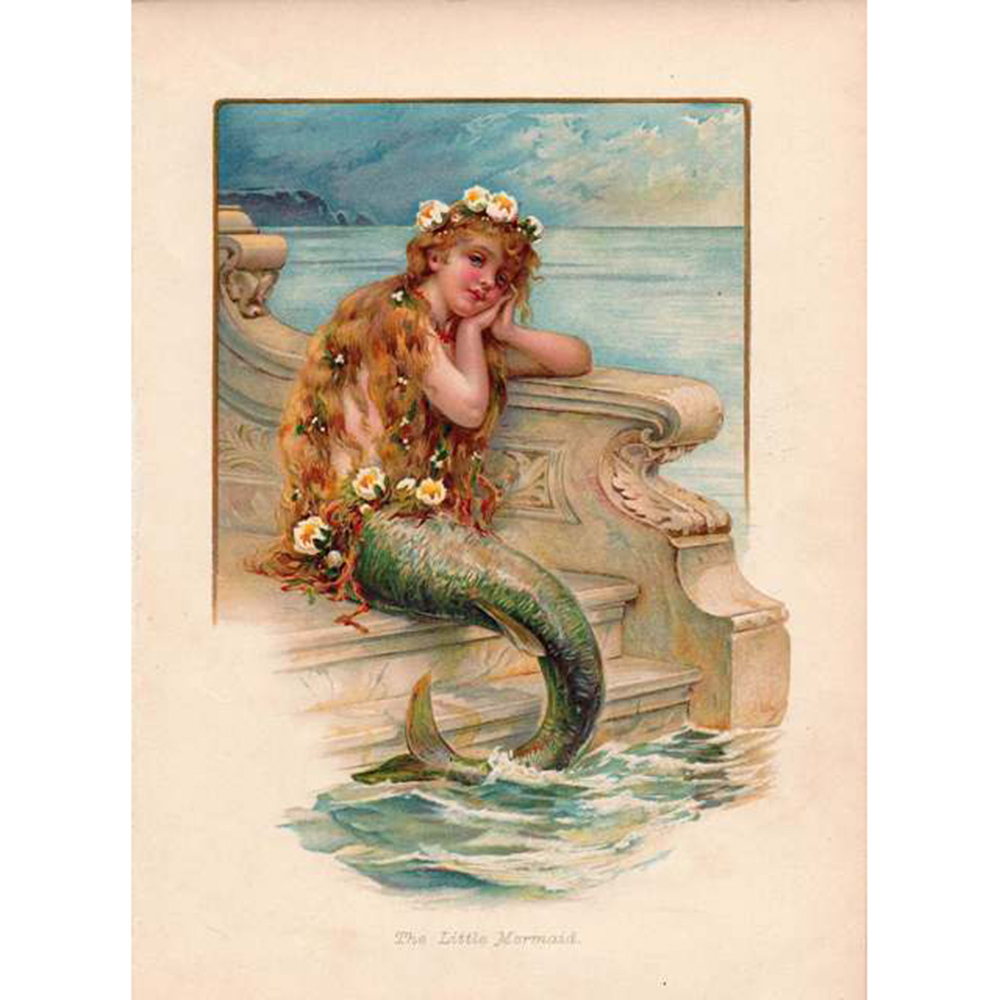
Fairyland Lustre Mermaid Bowl
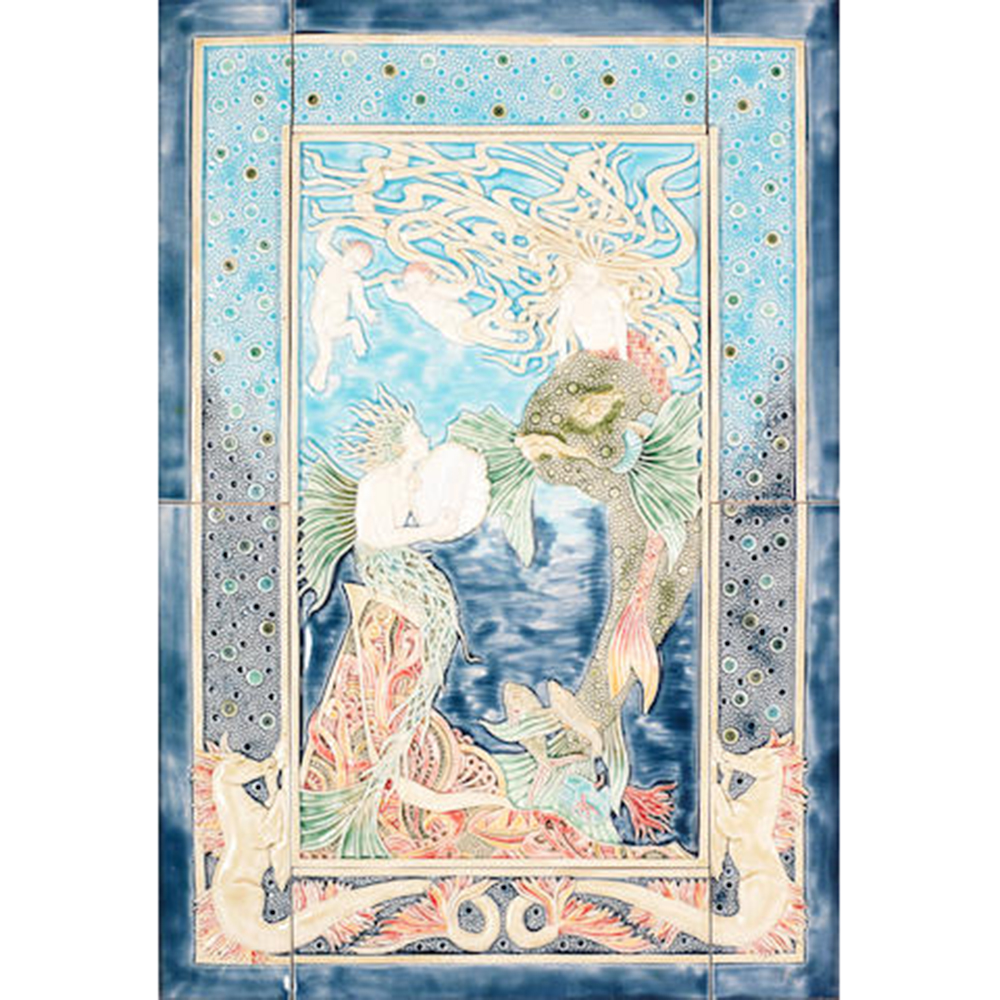
Serenade by V. Ellis
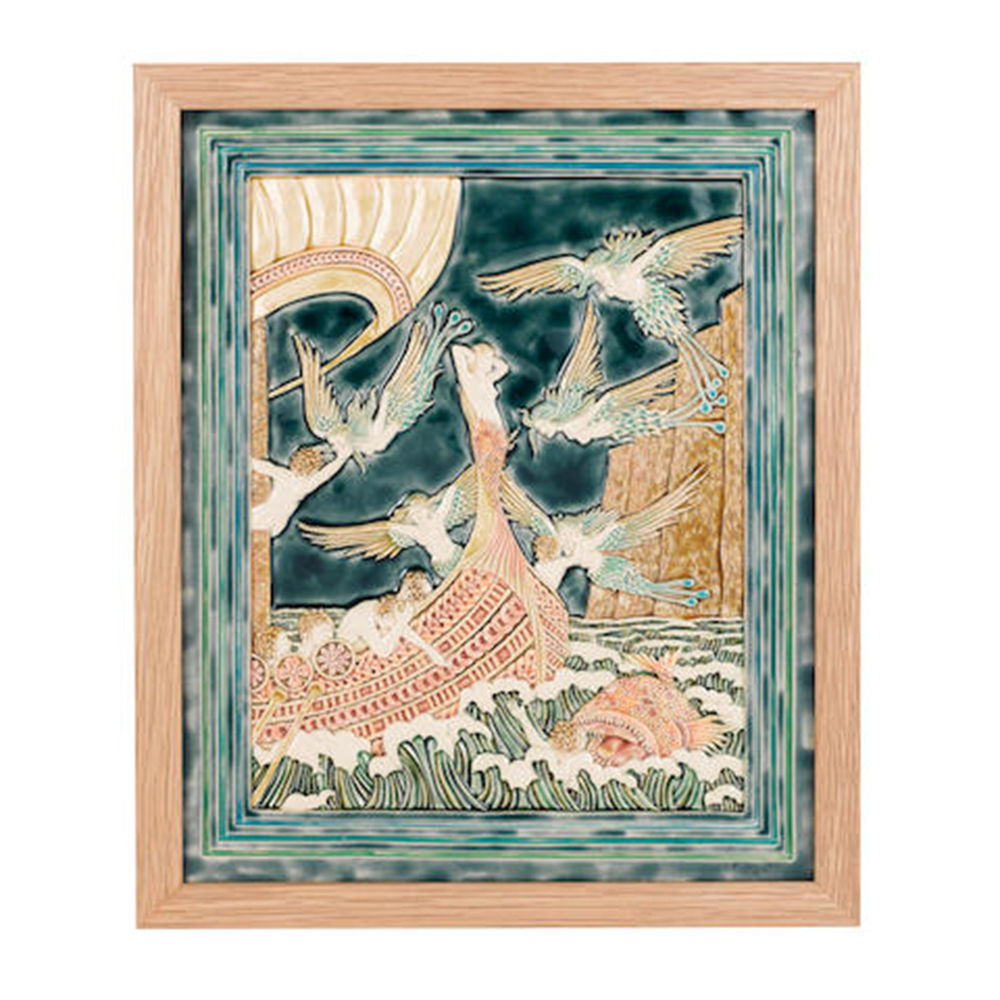
Song of the Sirens by V. Ellis
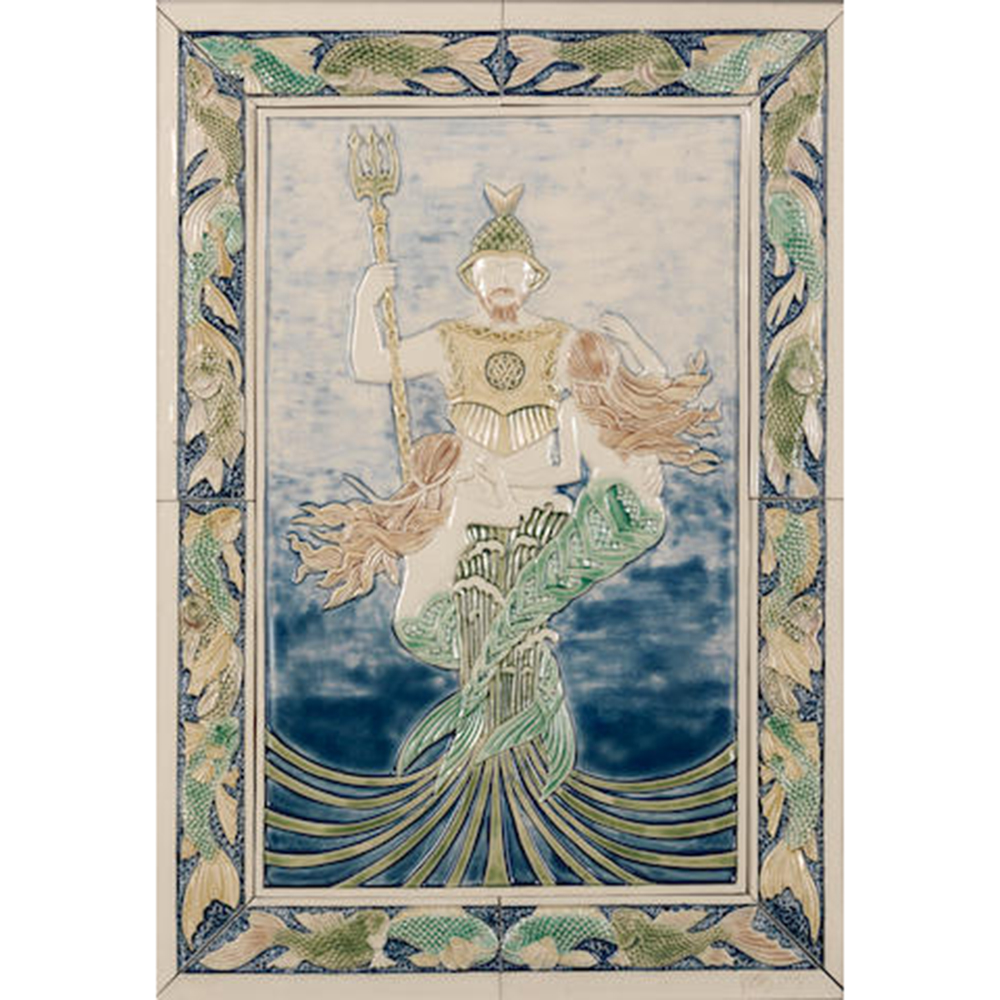
Mr. Peabody & the Mermaid
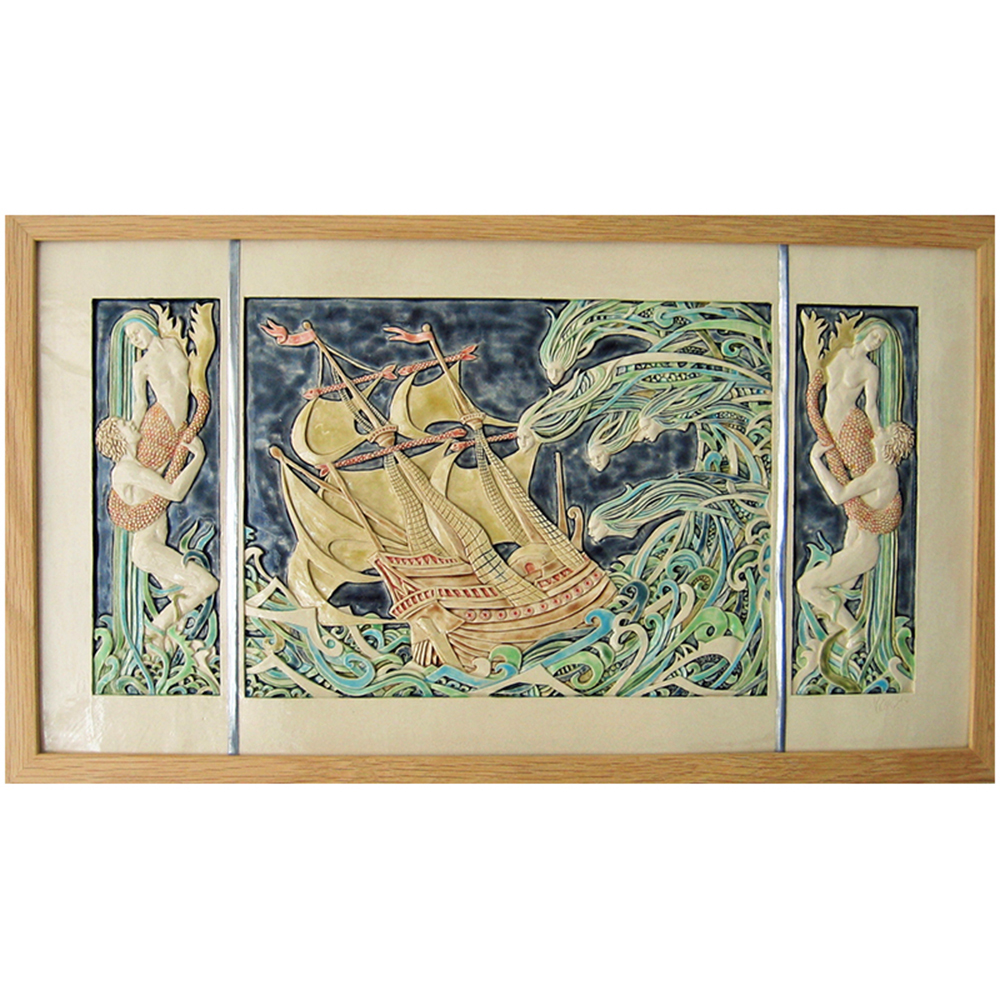
A Surge in the Waves by V. Ellis
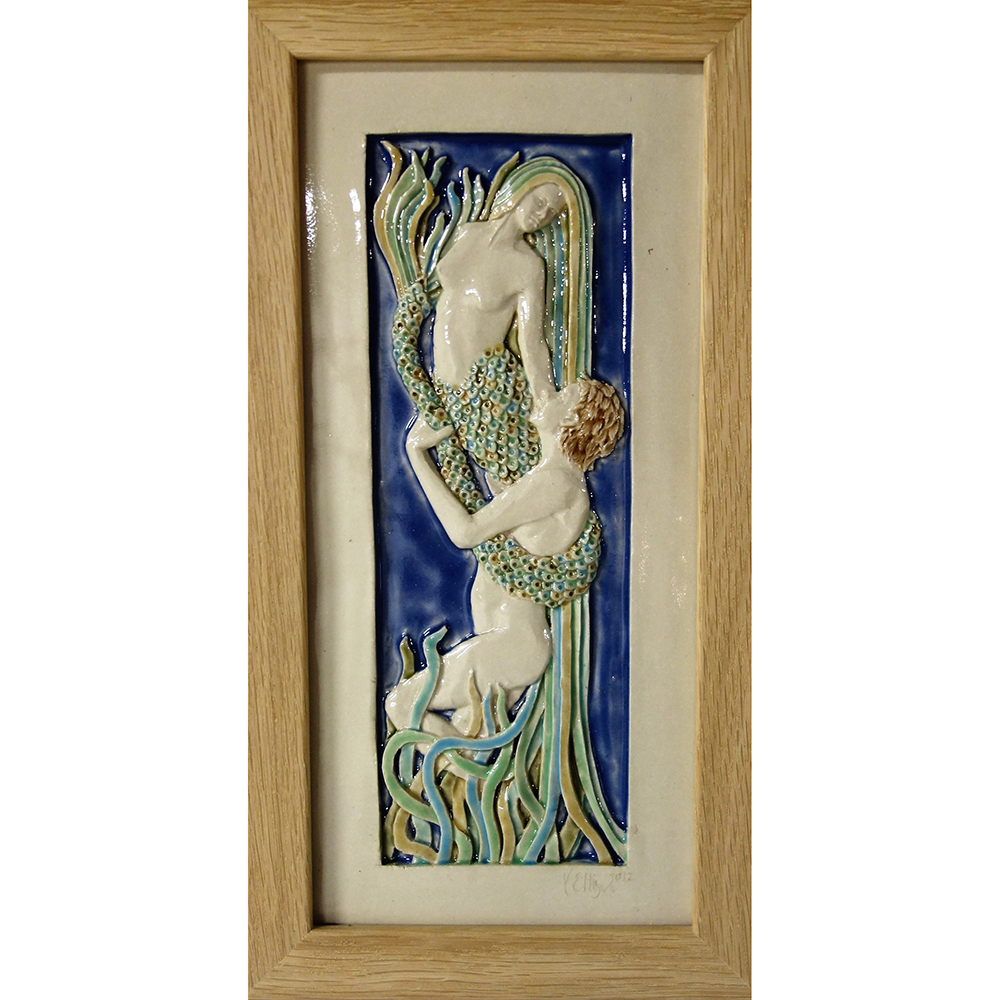
She Tempts Him Down by V. Ellis
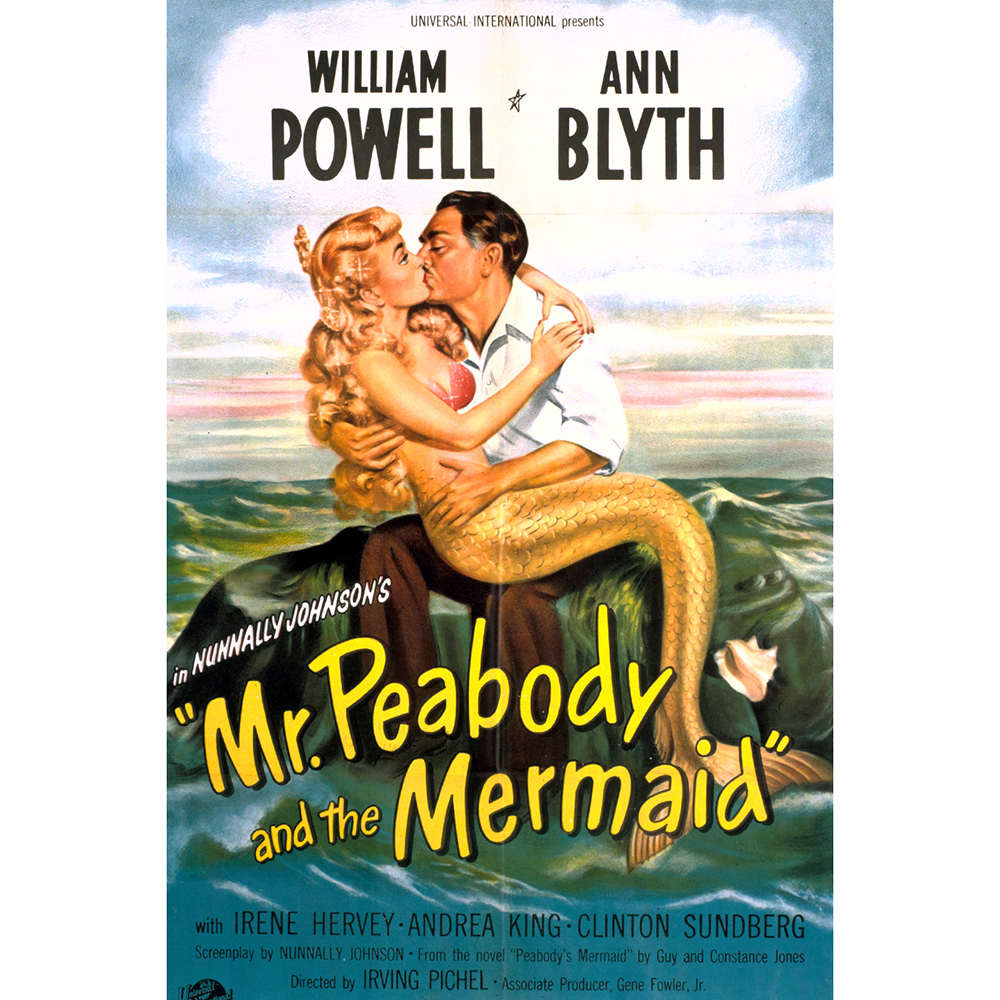
Mr. Peabody & the Mermaid
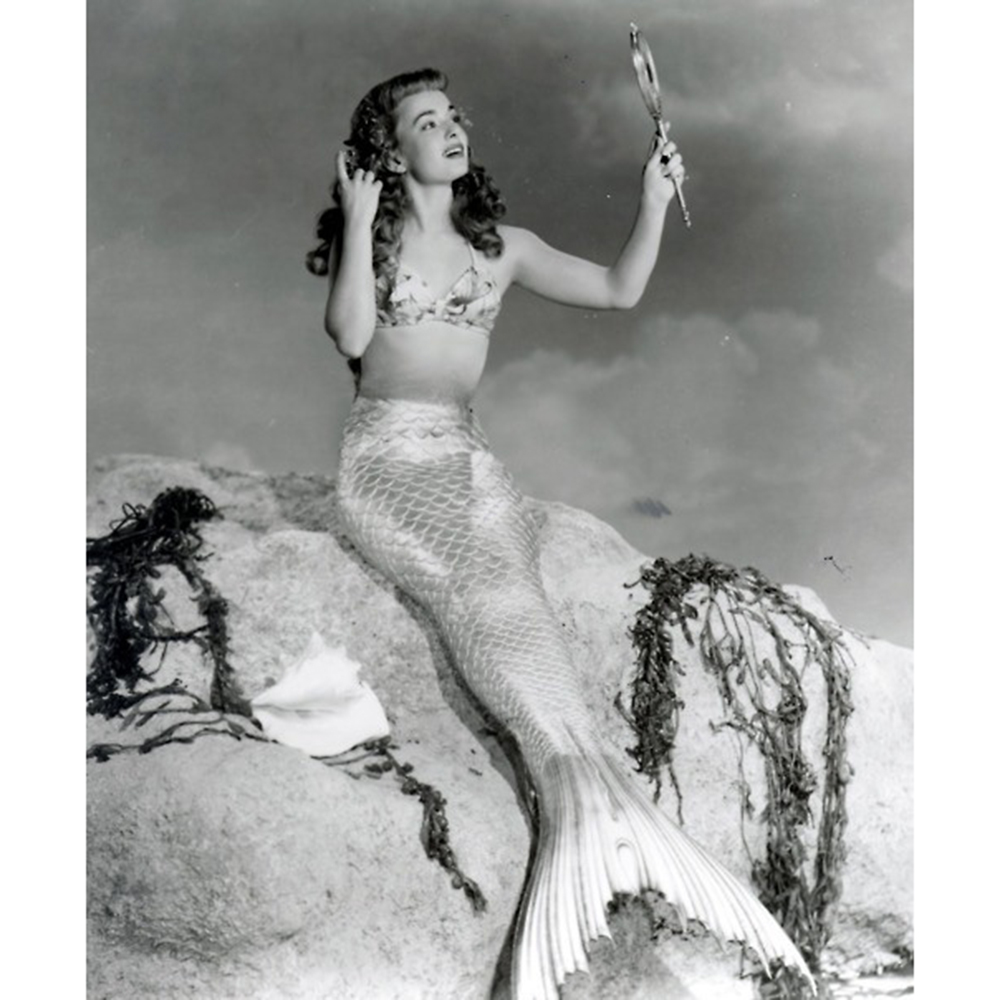
Mr. Peabody & the Mermaid
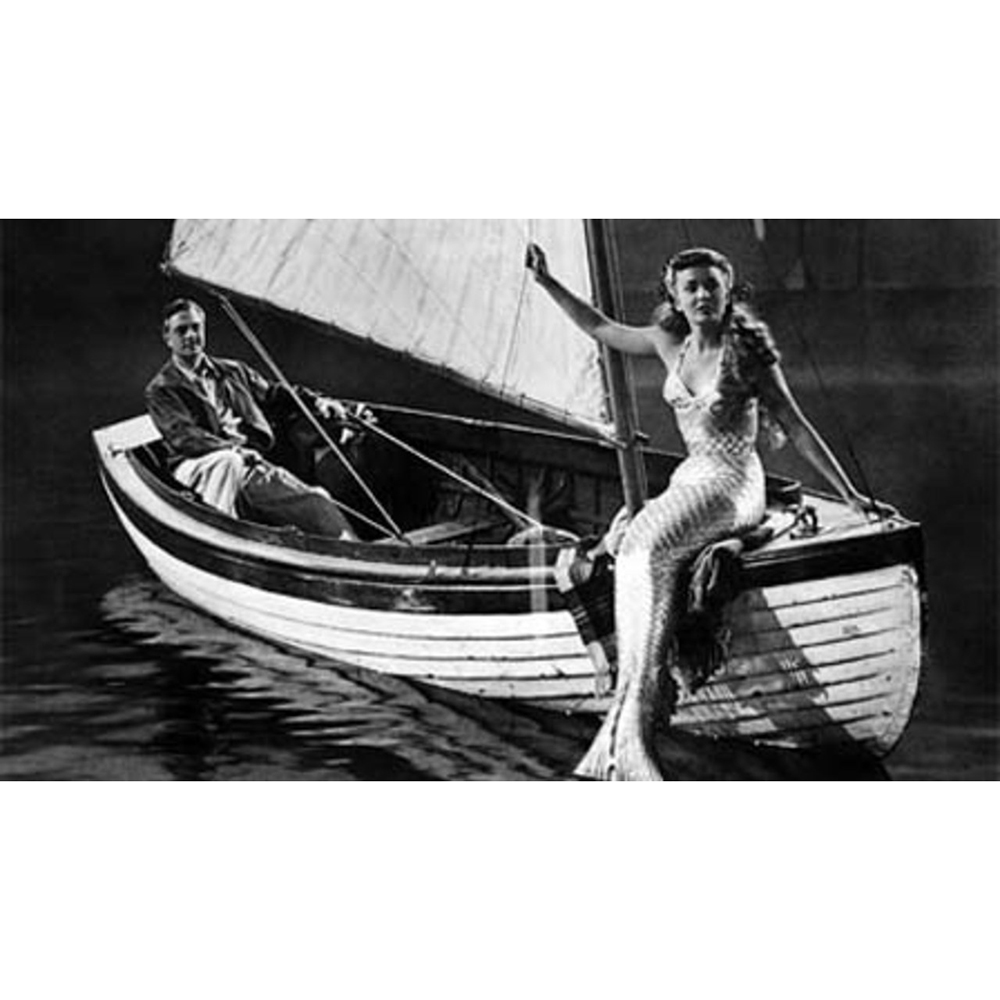
Mr. Peabody & the Mermaid
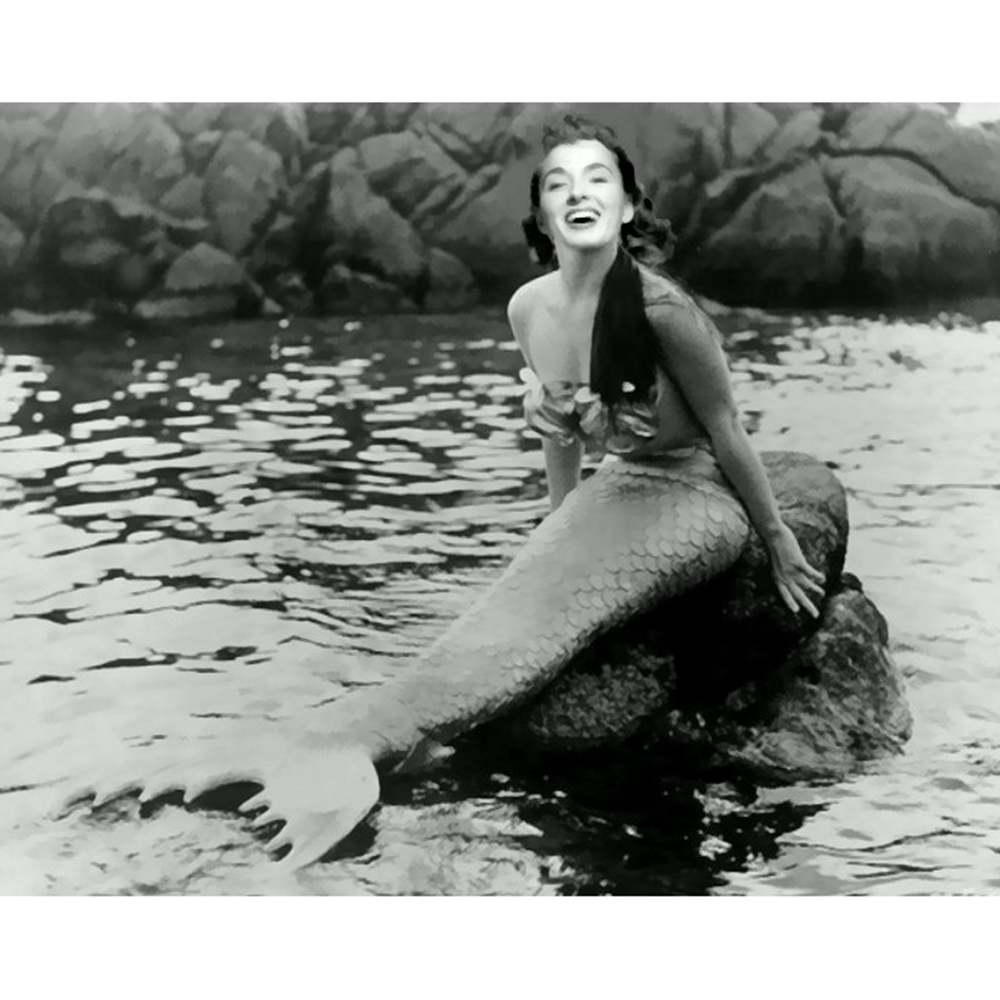
Mermaid Movie
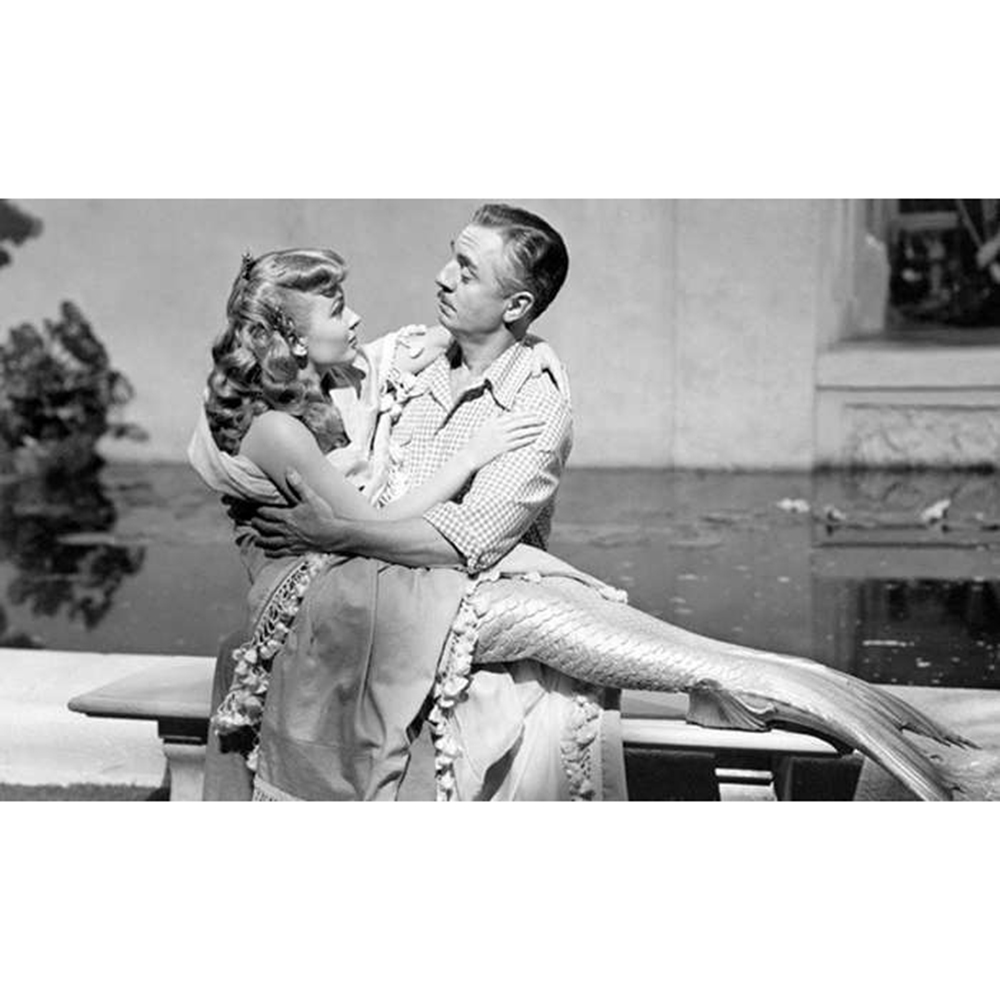
Mr. Peabody & the Mermaid
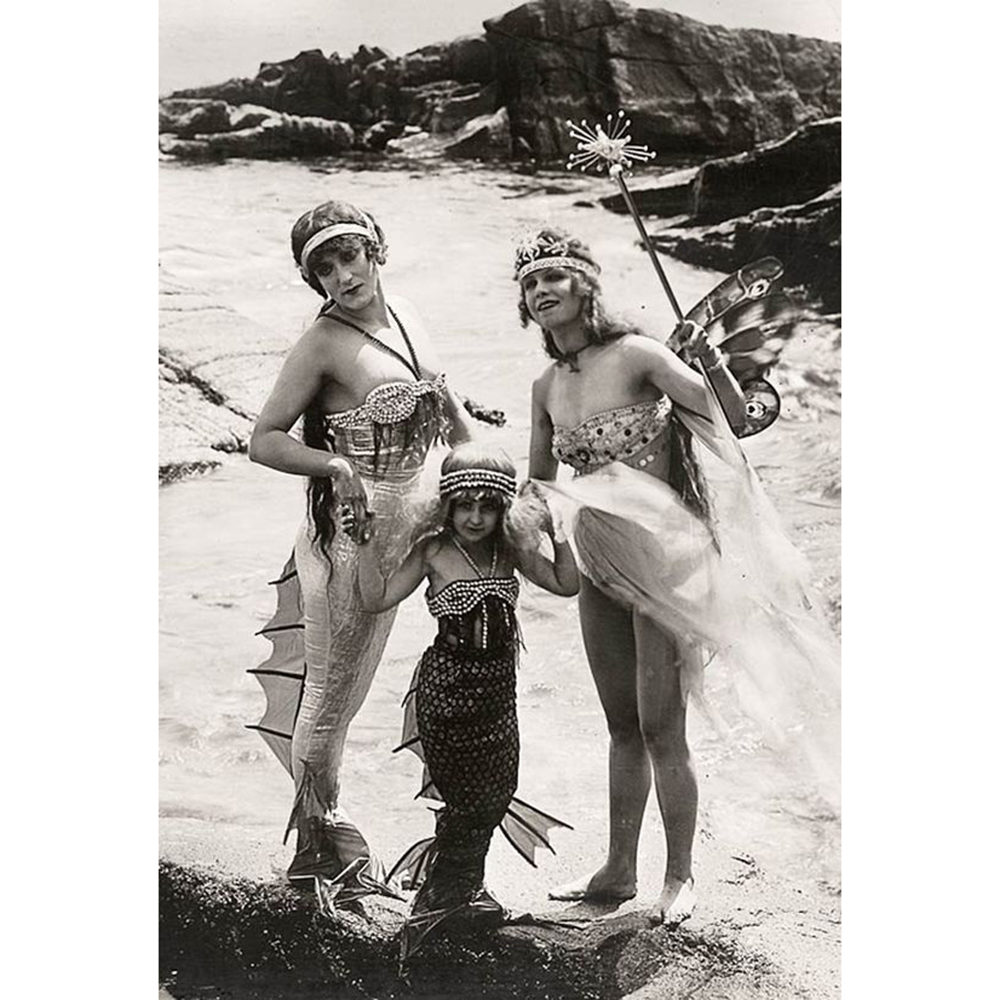
Mermaid Beach Group
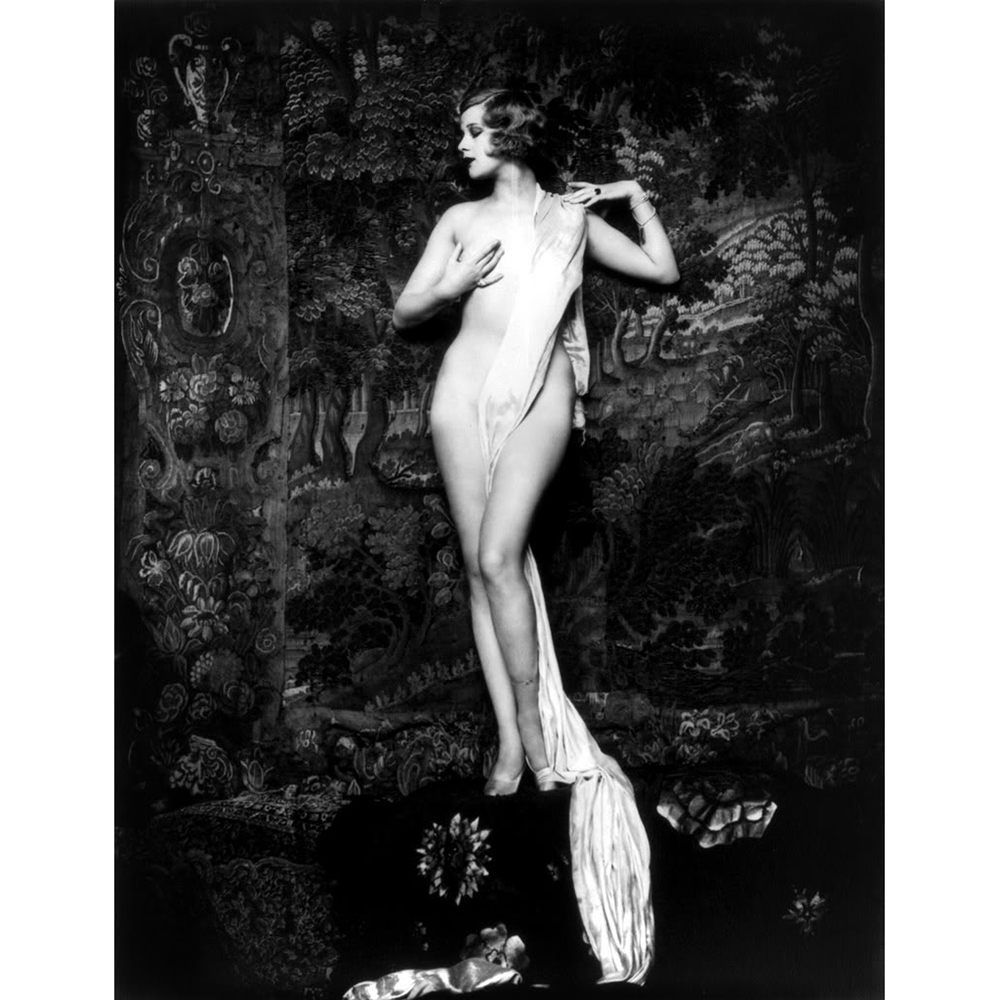
Annette Kellerman
